
- ازواجِ مطہرات / رحمت للعالمین / عظیم ہستیاں

حضرت خدیجہ رضی اللّٰہ عنہا کی زندگی کا مختصر جائزہ| خدیجۃ الکبریٰ کی مثالی زندگی
حضرت خدیجہ رضی اللّٰہ عنہا کا تعارف اور سلسلہ نسب.
آپ کا نام "خدیجہ" تھا۔ اپنی بے مثال عفّت و پاکدامنی کے باعث عہدِ جاہلیت میں "طاہرہ" کے لقب سے مشہور تھیں۔ حضرت خدیجہ رضی اللّٰہ عنہا کے والد کا نام "خویلد" ، اور والدہ کا اِسم مبارک "فاطمہ بنت زاہدہ" تھا۔
حضرت خدیجہ رضی اللّٰہ عنہا کا سلسلہ نسب یہ ہے: خدیجہ بنت خویلد بن اسعد بن عبد العزی بن قصی۔
"قصی" کے مقام پرحضرت خدیجہ رضی اللّٰہ عنہا کا سلسلہ نسب، رسول اللّٰہﷺ کے خاندان سے مل جاتا ہے۔ آپ رضی اللّٰہ عنہا کے والد "خویلد" اپنے قبیلے میں ممتاز حیثیت کے حامل اور مکّہ کے امیر ترین لوگوں میں شمار ہوتے تھے۔
حضرت خدیجہ رضی اللّٰہ عنہا کا نکاح اور اولاد
حضرت خدیجہ رضی اللّٰہ تعالیٰ عنہا کا پہلا نکاح "ابو ھالہ بن زرارہ تمیمی" سے ہوا۔ اِن سے اُن کے دو لڑکے پیدا ہوئے جن میں سے ایک کا نام "ہند" اور دوسرے کا نام "حارث" تھا۔ ابوھالہ بن زرارہ تمیمی کا جلد ہی اِنتقال ہو گیا۔
اس کے بعد حضرت خدیجہ رضی اللّٰہ تعالیٰ عنہا "عتیق بن عابد مخزومی" کے نکاح میں آئیں۔ اِن سے ایک لڑکی پیدا ہوئی اور اُس کا نام بھی "ہند" تھا۔ اِسی مناسبت سے آپ "اُمِّ ہند" کے نام سےبھی پکاری جاتی تھیں۔
اُمّ المومنین حضرت خدیجہ رضی اللّٰہ تعالیٰ عنہا کے بیٹے "ہند" اوّلین اسلام لانے والے لوگوں میں سے تھے۔ آپ اسلام کے لیے لڑی جانے والی جنگوں میں حصّہ لیتے رہے۔
ہند، حضرت علی رضی اللّٰہ تعالیٰ عنہ کے ساتھ جنگِ جمل میں شریک رہے اور شہید ہوئے۔
ایک کامیاب تاجرہ
حضرت خدیجہ رضی اللّٰہ تعالیٰ عنہا مکّہ میں کامیاب اور امیر ترین تاجرہ تھیں۔ رحمِ دلی، غریب پروری اور سخاوت کا پیکر تھیں۔
حضرت ابنِ اسحاق رضی اللّٰہ تعالیٰ عنہ سے روایت ہے کہ حضرت خدیجہ رضی اللّٰہ تعالیٰ عنہا کا شمار مکّہ مکرمہ کی معزز ترین اور مال دار خواتین میں ہوتا تھا۔
حضرت خدیجہ رضی اللّٰہ تعالیٰ عنہا اپنا تجارتی مال مکّہ مکرمہ سے باہر بھیجا کرتی تھیں۔ جتنا سامانِ تجارت سارے اہل قافلہ کا ہوتا، اُس کے برابر مالِ تجارت تنہا خدیجہ رضی اللّٰہ تعالیٰ عنہا کا ہوتا۔
آپ اپنے قاصدوں کو سامانِ تجارت دے کر روانہ فرماتیں، جو آپ کی طرف سے کاروبار کرتے۔ اس کام کے لیے اُنہیں باقاعدہ اُجرت دی جاتی یا تنخواہ مقرر کی جاتی۔ بعض اوقات کوئی حصّہ، نصف، تہائی یا چوتھائی مقرّر کر دیا جاتا۔ نفع کی صورت میں وہ اپنا حصّہ لے لیتے۔ بصورتِ دیگر، نقصان کی صورت میں تمام ذمّہ داری خدیجہ رضی اللّٰہ تعالیٰ عنہا پر ہوتی۔
رسول اللّٰہﷺ سے سامانِ تجارت لے جانے کی درخواست
حضرت ابن اسحاق رضی اللّٰہ تعالیٰ عنہ روایت کرتے ہیں کہ حضرت خدیجہ رضی اللّٰہ تعالیٰ عنہا نے جب رسول اللّٰہﷺ کی سچّائی، امانت و دیانت کے بارے میں سُنا تو اُنہوں نے آپﷺ سے اپنا مالِ تجارت شام لےجانے کی درخواست کی۔ طے پایا کہ دوسرے تاجروں کی نسبت منافع میں سے زیادہ حصّہ رسول اللّٰہﷺ کو دیا جائے گا۔ آپﷺ نے خدیجہ رضی اللّٰہ عنہا کی پیشکش قبول کر لی۔
حضرت خدیجہ رضی اللّٰہ تعالیٰ عنہا کے سامانِ تجارت کے ساتھ روانگی اور شام میں درپیش حالات
رسول اللّٰہﷺ حضرت خدیجہ رضی اللّٰہ تعالیٰ عنہا کا مالِ تجارت لے کر روانہ ہوئے۔ آپ رضی اللّٰہ تعالیٰ عنہا کا غلام بھی اُن کے ساتھ تھا۔
دونوں شام پہنچے۔ وہاں "نسطور" راہب کی خانقاہ کے قریب ایک درخت کے سایہ میں آرام کی غرض سے بیٹھے۔ راہب نے میسرہ سے دریافت کیا، "یہ جو درخت کے نیچے آرام فرما رہے ہیں، یہ کون شخص ہیں"؟
اُس نے جواب دیا، "یہ قریش کے ہاشمی خاندان سے تعلّق رکھنے والے نہایت صالح، امانت دار، اور سچّے انسان ہیں"۔
راہب نے پوچھا، "کیا ان کی آنکھوں میں سرخی ہے"۔
میسرہ نے جواب میں کہا، "ہاں، سُرخی ہے جو کبھی ان سے جدا نہیں ہوتی"۔
نسطور بولا، " بلاشبہ یہ پیغمبر ہیں، اور آخری نبی ہیں"۔
(طبقات ابن سعد)
رسولِ کریمﷺ یہاں جومال لائے تھے بیچ دیا اور جو خریدنا تھا وہ خرید لیا۔
واپسی پر دوپہر اور سخت گرمی کے وقت، میسرہ نے دیکھا کہ رسول اللّٰہﷺ اُونٹ پر سوار ہوئے۔ آپﷺ کو تمازت آفتاب سے بچانے کے لیے دو فرشتے سایہ فگن ہو گئے۔ یہ سب کچھ دیکھنے کے بعد وہ رسول اللّٰہﷺ کا گرویدہ ہو گیا۔ اور اللّٰہ تعالیٰ نے اُس کے دل میں رسول اللّٰہﷺ کے لیے بے پناہ محبّت پیدا کر دی۔
اس تجارتی سفر میں حضرت خدیجہ رضی اللّٰہ عنہا کے سامانِ تجارت نے معمول سے دو گُنا زیادہ منافع حاصل کیا۔
حضرت خدیجہ کا رسول اللّٰہﷺ کو نکاح کا پیغام
سفرِ شام سے واپسی کے بعد، تجارت سے دو گنا زیادہ منافع حاصل ہونا غیر معمولی واقعہ تھا۔
میسرہ نے بھی حضرت خدیجہ رضی اللّٰہ عنہا سے رسول اللّٰہﷺ کی سچّائی اور امانت داری کا اظہار کیا۔ یہ سب جان کر آپ رضی اللّٰہ عنہا بہت متاثر ہوئیں۔ اور اُنہوں نے رسول اللّٰہﷺ سے نکاح کا فیصلہ کیا۔
حضرت خدیجہ رضی اللّٰہ تعالیٰ عنہا کے دوسرے شوہر کی وفات کے بعد، مکّہ مکرمہ کے بہت سے لوگ آپ رضی اللّٰہ عنہا سے شادی کے خواہشمند تھے۔ لیکن حضرت خدیجہ رضی اللّٰہ تعالیٰ عنہا نے کسی کے پیغامِ نکاح کو قبول نہ فرمایا۔
حضرت خدیجہ رضی اللّٰہ تعالیٰ عنہا نے رسول اللّٰہﷺ سے نکاح کی خواہش ظاہر کی۔ اور اپنی سہیلی نفیسہ کے ذریعے نکاح کا پیغام بھیجا۔

رسول اللّٰہﷺ نے نکاح کا پیغام قبول کر لیا
حضرت خدیجہ رضی اللّٰہ تعالیٰ عنہا کی اس پیشکش کا ذکر رسول اللّٰہﷺ نے اپنے چچا سے کیا. حضرت حمزہ رضی اللّٰہ تعالیٰ عنہ، حضرت خدیجہ رضی اللّٰہ تعالیٰ عنہا سے رشتے کا پیغام لے کراُن کے والد خویلد ابن اسعد کے پاس گئے جسے اُنہوں نے قبول کر لیا۔
اور یوں مکّہ مکرمہ میں یہ نکاح سادگی سے انجام پایا۔ نکاح کے وقت سیّدہ خدیجہ چالیس برس کی تھیں اور رسول اللّٰہﷺ کی عمرمبارک پچّیس برس تھی۔
رسول اللّٰہﷺ پر پہلی وحی اور حضرت خدیجہ کی دلجوئی
نبی کریمﷺ جب چالیس برس کے تھے، توغارِ حرا میں حضرت جبرائیل علیہ السّلام اللّٰہ کی طرف سے پہلی وحی لے کر آئےجو سورہ العلق کی ابتدائی چند آیات پرمشتمل تھی۔ عر ض کیا؛
ٱقْرَأْ بِٱسْمِ رَبِّكَ ٱلَّذِى خَلَقَ ۔ خَلَقَ ٱلْإِنسَـٰنَ مِنْ عَلَقٍ ۔ ٱقْرَأْ وَرَبُّكَ ٱلْأَكْرَمُ ۔ ٱلَّذِى عَلَّمَ بِٱلْقَلَمِ ۔ عَلَّمَ ٱلْإِنسَـٰنَ مَا لَمْ يَعْلَمْ ۔
پڑھیے اپنے اس رب کے نام سے جس نے پیدا کیا۔ جمے ہوئے خون کے ایک لوتھڑے سے انسان کی تخلیق کی۔ پڑھیے اور آپ کا ربّ بہت کریم ہے۔ جس نے قلم کے ذریعہ سے علم سکھایا، اور انسان کو وہ کچھ سکھایا ہے جو وہ نہیں جانتا تھا۔.

رسول اللّٰہﷺ جب گھر لوٹے تو آپ کا قلب مبارک نہایت مضطرب تھا۔
نبی کریمﷺ نے حضرت خدیجہ رضی اللّٰہ تعالیٰ عنہا سے تمام احوال بیان فرمایا۔ آپﷺ نے ان سے چادر اوڑھا دینے کے لیے کہا۔
اس موقع پر حضرت خدیجہ رضی اللّٰہ تعالیٰ عنہا نے ان الفاظ میں رسول اللّٰہﷺ کی دلجوئی فرمائی، "آپﷺ کو کس بات کا ڈر ہو سکتا ہے۔ اللّٰہ تعالیٰ آپ کو ہر ایک مشقّت سے بچا لے گا۔ بے شک آپﷺ صلہ رحمی کرتے ہیں. قرابت داروں اور رشتہ داروں سے عمدہ سلوک کرتے ہیں. بیکسوں کی دستگیری فرماتے ہیں. مہمان نواز ہیں. اور مصیبت زدہ لوگوں کی مدد کرنے والے ہیں"۔
(صحیح بخاری۔ حدیث: ۳ )
رسول اللّٰہﷺ کی حضرت خدیجہ سے اولاد
رسول اللّٰہﷺ کی تمام اولاد سوائے بیٹے "ابراہیم" کے، حضرت خدیجہ رضی اللّٰہ تعالیٰ عنہا سے ہے۔
حضرت عبداللّٰہ بن عباس رضی اللّٰہ تعالیٰ عنہ کے مطابق، رسول اللّٰہﷺ کے پہلے فرزند "قاسم رضی اللّٰہ تعالیٰ عنہ" ہیں جو اعلانِ نبوّت سے پہلے مکّہ مکرمہ میں پیدا ہوئے۔
نبی کریمﷺ اُن کے نام سے ہی کنیّت رکھتے تھے۔ یعنی "ابوالقاسم" ۔ اُن کے بعد، حضرت زینب رضی اللّٰہ تعالیٰ عنہا ، پھر حضرت بی بی رُقیّہ رضی اللّٰہ تعالیٰ عنہا ، اس کے بعد حضرت اُمِّ کلثوم رضی اللّٰہ تعالیٰ عنہا اور پھر رسول اللّٰہﷺ کی چھوٹی شہزادی، خاتونِ جنّت حضرت سیّدہ فاطمة الزّہرا رضی اللّٰہ تعالیٰ عنہا پیدا ہوئیں۔
اعلانِ نبوّت کے بعد، ایک اور فرزند، "عبداللّٰہ" پیدا ہوئے جن کا لقب "طیّب" اور "طاہر" تھا۔
(طبعات ابن سعد' تاریخ طبری' البدایہ والنہایہ)
عبداللّٰہ بھی کم سنی میں انتقال فرما گئے۔ رسول اللّٰہﷺ اُن کی وفات پر نہایت غمزدہ تھے۔ اس لیے کہ آپﷺ کے دشمن یہ کہنے لگے کہ آپﷺ کی نسل باقی نہیں رہے گی۔
اللّٰہ نے رسول اللّٰہﷺ پر سورہ الکوثر نازل فرمائی۔ اس سورہ میں رسول اللّٰہﷺ کو " خیرِ کثیر " کی بشارت دی گئی۔ مزید یہ کہ آپﷺ کا دشمن ہی بے نام ونشان رہے گا۔ اُسی کی نسل ختم ہونے والی ہے۔

حضرت خدیجہ رضی اللّٰہ عنہا پہلی مسلمان خاتون
حضرت سیّدہ خدیجہ رضی اللّٰہ تعالیٰ عنہا وہ پہلی عظیم خاتون ہیں جنہوں نے رسول اللّٰہﷺ کی تصدیق کی۔ اور اپنا تمام مال اللّٰہ کی رضا کی خاطر اِسلام کے لیے خرچ کیا۔
حضرت عائشہ رضی اللّٰہ عنہا کا حضرت خدیجہ رضی اللّٰہ عنہا کے بارے میں بیان
حضرت سیّدہ عائشہ رضی اللّٰہ تعالیٰ عنہا، حضرت خدیجہ کے بارے میں بیان کرتی ہیں،"میں نے رسول اللّٰہﷺ کی ازواجِ مطہرات میں سے کسی پر اتنا رشک نہ کیا جتنا خدیجہ رضی اللّٰہ تعالیٰ عنہا پر کیا۔ حالانکہ میں نے اُنہیں نہیں دیکھا تھا۔
نبی کریمﷺ اُن کا بہت ذکرِخیر فرماتے تھے۔ جب جانور ذبح فرماتے، اُسے خدیجہ رضی اللّٰہ تعالیٰ عنہا کی سہیلیوں کو بھیجتےتھے۔
جب کبھی میں رسول اللّٰہﷺ سے عرض کرتی کہ گویا خدیجہ رضی اللّٰہ تعالیٰ عنہا کے سوا دُنیا میں کوئی عورت ہی نہ تھی۔ تو رسول اللّٰہﷺ فرماتے "وہ ایسی تھی وہ ایسی تھی اور اُن سے میری اولاد ہوئی"۔
(صحیح بخاری حدیث: ۳۸۱۸)
شعب ابی طالب میں تین سال تک محصوری کے دوران جب مسلمانوں پر عرصہ حیات تنگ رہا، حضرت خدیجہ رضی اللّٰہ تعالیٰ عنہا نے ثابت قدمی کے ساتھ ان تکالیف کو برداشت کیا۔
حضرت خدیجہ کی وفات اور تدفین
نبوّت کے دسویں سال، حضرت ابو طالب کی وفات کے ایک کے ماہ بعد، دس رمضان المبارک کو حضرت خدیجہ رضی اللّٰہ تعالیٰ عنہا وصال فرما گئیں۔
رسول اللّٰہﷺ کے دونوں غمگسار اس فانی دنیا سے رخصت ہو گئے۔ یہ نہایت کٹھن وقت تھا۔ آپﷺ نے ان صدمات کا بے حد اثرلیا۔ اور اِس سال کو "عام الحزن" یعنی "غم کا سال" قرار دیا۔
انتقال کے وقت حضرت خدیجہ رضی اللّٰہ کی عمر مبارک پیسنٹھ برس تھی۔ آپ رضی اللّٰہ عنہا کی تدفین مکّہ میں ہوئی۔
آپ کو "جنّت المعلّیٰ" میں مدفون کیا گیا۔ تدفین کے وقت، رسول اللّٰہﷺ خود لحد پاک میں اُترے۔ اور اُمّت کی ماں، حضرت سیّدہ خدیجۃ الکبریٰ رضی اللّٰہ تعالیٰ عنہا کو اللّٰہ کے سپرد فرما دیا۔
- Next story قرآن مجید کا تعارف قرآنی آیات کی روشنی میں | قرآن کے بارے میں آیات قرآنی
- Previous story سورہ الممتحنہ اردو ترجمہ | باطل سے دوستی، صراطِ مستقیم سے دُوری
You may also like...

طفیل بن عمرو دوسی کا قبولِ اسلام | ذی النور طفیل بن عمرو دوسی کا کوڑا مشعل بن گیا

رسول اللّٰہﷺ کی دعا سے مدینہ میں بارش | رسول اللّٰہ کی دعا کا معجزہ اورمدینہ کی بارش

عبداللّٰہ بن سلام | کاتبِ وحی عبداللّٰہ بن سلام کے قبولِ اسلام اور حالاتِ زندگی کا جائزہ
Leave a reply cancel reply.
Your email address will not be published. Required fields are marked *
Most Popular

ماہِ رمضان کی فضیلت قرآن و احادیث کی روشنی میں | ماہِ رمضان کی فضیلت کے اسباب

قبولیت دعا کے خاص اوقات اور مقامات | احادیث کے مطابق دعا کی قبولیت کے اوقات
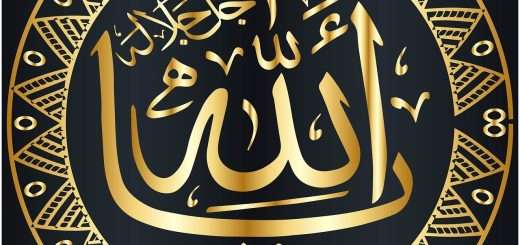
ذکرالٰہی کی فضیلت و اہمیت | قرآن اور احادیث میں ذکرالٰہی کی فضیلت کا بیان

یوم جمعہ کی فضیلت | قرآن و سنّت کی روشنی میں جمعے کے دن کی فضیلت کا بیان
گستاخ رسولﷺ ابورافع یہودی کو جہنّم واصل کیے جانے کا واقعہ | پنڈلی کی ہڈی جڑ گئی
رحمت للعالمین | وہ نبیوں میں رحمت لقب پانے والا | رحمت عالمﷺ
شانِ محمد مصطفیٰﷺ کا قرآنِ مجید میں بیان
رسول اللّٰہﷺ کی انبیاء پرفضیلت | قرآن واحادیث کے مطابق رسول اللّٰہﷺ کی انبیاء پرفضیلت
سیّدہ فاطمہ رضی اللّٰہ عنہا کا مقام و مرتبہ احادیث کی روشنی میں
عکاشہ بن محصن رضی اللّٰہ عنہ جن کے ہاتھ میں رسول اللّٰہﷺ کی چھڑی تلوار بن گئی
اسلامی فلاحی ریاست میں غیرمسلموں کے حقوق آیات قرآنی کی روشنی میں
سورہ الحجرات اردو ترجمہ | اسلامی ریاست کے متعلّق احکامات
POPULAR POSTS
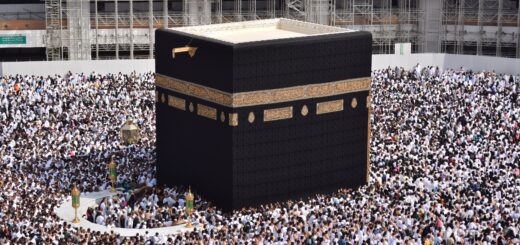
اصحاب فیل کا واقعہ| قرآن میں مذکور ہاتھی والوں کی تباہی کا قصّہ| اصحاب فیل اورابابیل
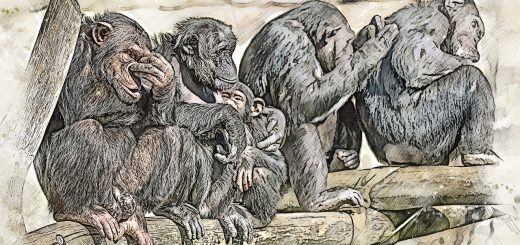
اصحابِ سبت | قرآن کے مطابق جن کی صورتیں مسخ کر دی گئیں | اصحابِ سبت کا واقعہ
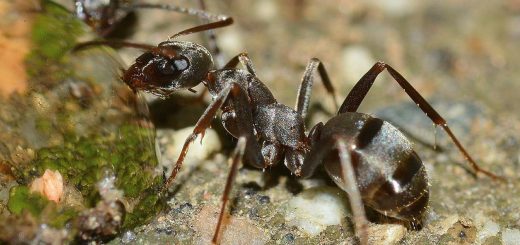
سلیمان علیہ السّلام چیونٹی کی بات سُن کر مُسکرا اُٹھے | حضرت سلیمان اور چیونٹی
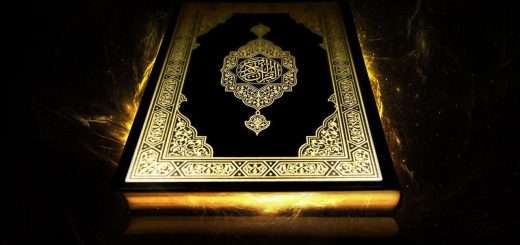
نجران کا واقعہ | سورہ آلِ عمران میں مذکور آیتِ مباہلہ کا نزول | آیتِ مباہلہ آلِ عمران:۶۱
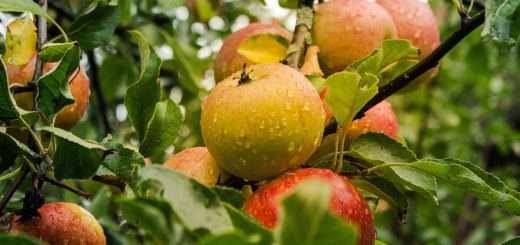
باغ کی تباہی | سورہ القلم میں مذکور اصحاب الجنّہ کا قصّہ

قوم سبا کا واقعہ | سیل العرم اور قوم سبا کی تباہی | قوم سبا کا سیلاب

تابوت سکینہ | بنی اسرائیل کا انبیاء کےتبرکات والا مقدّس صندوق

قارون کا واقعہ | قرآن مجید کے مطابق قارون کا انجام

اصحاب الاخدود | اقرارِ واحدانیت پر شہید کیے جانے والے اہلِ خندق
MORE FROM THIS SITE
اتحاد امت کے بارے میں قرآنی احکام | وحدت امت کا اسلامی تصور | وَٱعْتَصِمُوا۟ بِحَبْلِ ٱللَّهِ
قدیم عرب کا جغرافیہ اور اقوام قبل از اسلام | قدیم عرب کی آب و ہوا اور مفاخر اقوام
رشتے داروں کے حقوق کے بارے میں قرآنی احکام اور احادیث | رشتے داروں کے حقوق
مریض کی عیادت کی فضیلت اور آداب | اسلام میں مریض کی عیادت کے احکام اور آداب
تصوف کا مفہوم | تصوف قرآن و سنّت کی روشنی میں | قرآن کے مطابق صوفی کون ہے
Privacy Overview
| Cookie | Duration | Description |
|---|---|---|
| cookielawinfo-checkbox-analytics | 11 months | This cookie is set by GDPR Cookie Consent plugin. The cookie is used to store the user consent for the cookies in the category "Analytics". |
| cookielawinfo-checkbox-functional | 11 months | The cookie is set by GDPR cookie consent to record the user consent for the cookies in the category "Functional". |
| cookielawinfo-checkbox-necessary | 11 months | This cookie is set by GDPR Cookie Consent plugin. The cookies is used to store the user consent for the cookies in the category "Necessary". |
| cookielawinfo-checkbox-others | 11 months | This cookie is set by GDPR Cookie Consent plugin. The cookie is used to store the user consent for the cookies in the category "Other. |
| cookielawinfo-checkbox-performance | 11 months | This cookie is set by GDPR Cookie Consent plugin. The cookie is used to store the user consent for the cookies in the category "Performance". |
| viewed_cookie_policy | 11 months | The cookie is set by the GDPR Cookie Consent plugin and is used to store whether or not user has consented to the use of cookies. It does not store any personal data. |

حیاتِ صحابہ
رسول اللہ ﷺ کی محبوب بیوی"حضرت خدیجہؓ " جنہیں اللہ تعالیٰ کی طرف سے سلام موصول ہواتھا۔.

سیدہ طاہرہ، جنہیں تمام مسلمان حضرت"خدیجہ رضی اللہ تعالیٰ عنہا" کے نام سے جانتے ہیں ۔ حضرت خدیجہ رضی اللہ تعالیٰ عنہا تمام مسلمانوں کی ماں ہیں ،جن کو اللہ تعالیٰ نے یہ درجہ عطا فرمایا کہ وہ نبی کریم ؐ کی سب سے پہلی زوجہ محترمہ بنی تھیں۔
آپ وہ پہلی خوش نصیب خاتون ہیں،جو نبی کریم ؐ پر سب سے پہلے ایمان لائی تھیں۔آپ کو یہ بھی فضیلت حاصل ہے کہ اللہ تعالیٰ نے آپ کو سلام کہلوایا۔رسول اللہؐ نے حضرت خدیجہ رضی اللہ تعالیٰ عنہا کے بارے میں فرمایاکہ"ساری دنیا کی عورتوں میں (اپنے بارے میں)مریم(حضرت عیسیٰ علیہ السلام کی والدہ) افضل تھیں اور اسی طرح حضرت خدیجہ رضی اللہ تعالیٰ عنہا افضل ہیں۔
حضرت خدیجہ رضی اللہ تعالیٰ عنہا مکہ مکرمہ کے ایک تاجر "خُوَیلدِ بن اسد" کی صاحبزادی ہیں۔آپ کی والدہ کا نام "فاطمہ بنت زائدہ" ہے۔ حضرت خدیجہ رضی اللہ تعالیٰ عنہا ایک معزز خاندان سے تعلق رکھتی تھیں۔ حضرت خدیجہ رضی اللہ تعالیٰ عنہا کا سلسلہ نسب پانچویں پشت پر رسول اللہؐ سے جا ملتا ہے۔ حضرت خدیجہ رضی اللہ تعالیٰ عنہا کی پہلی شادی "ابو حالہ بن زرارہ تمیمی" سے ہوئی تھی۔ان سے آُ کے دو بیٹے پیدا ہوئے تھے۔ایک کا نام "ہند" اور دوسرے کا نام "حارث" تھا۔ابو حالہ کے انتقال کے بعد حضرت خدیجہ رضی اللہ تعالیٰ عنہا کی دوسری شادی"عتیق بن عاید مخزومی سے ہوئی ،ان سے آپکی ایک بیٹی پیدا ہوئی۔اسی مناسبت سے آپ "اُمِ ہند" بھی کہلاتی تھیں۔ عتیق کی وفات کے بعد حضرت خدیجہ رضی اللہ تعالیٰ عنہا نے رسول اللہ ؐ کے ساتھ شادی کی تھی۔
رسول اللہ ؐ کو حضرت خدیجہ رضی اللہ تعالیٰ عنہا سے بے حد محبت تھی،حضورﷺ سے نکاح کے بعد حضرت خدیجہ رضی اللہ تعالیٰ عنہا 25برس تک زندہ رہیں۔ حضرت خدیجہ رضی اللہ تعالیٰ عنہا کی زندگی میں آپؐ نے دوسری شادی نہیں کی تھی۔اللہ تعالیٰ کی زات نے نبی کریمؐ کو حضرت خدیجہ رضی اللہ تعالیٰ عنہا کے بطن سے حضرت ابراہیم کو چھوڑ کر ساری اولاد حضرت خدیجہ رضی اللہ تعالیٰ عنہا سے عطا فرمائی تھی۔
رسول للہؐ سے نکاح کے بعد حضرت خدیجہ نے اپنا تمام کاروباررسول اللہؐ کے حوالے کر دیا ۔جب نبی کریمؐ کی عمر مبارک 35 سال ہوئی تو آپ تنہائی پسند ہو گئے،اور آپؐ مکہ مکرمہ سے تین میل کے فاصلے پر واقع ایک غار جسے غارِ "حرا" کہا جاتا تھا وہاں چلے جاتے تھے،اور آپؐ وہاں کئی دنوں تک قیام فرماتے۔حضرت خدیجہ رضی اللہ تعالیٰ عنہا کئی دنوں کا کھانا بنا کر آپؐ کو دے دیتی تھیں۔
ایک دن رسول اللہ ؐ انتہائی پریشانی کے عالم میں گھر تشریف لائے۔آپؐ نے آتے ہی فرمایا مجھے کمبلوں سے ڈھانپو،مجھے کمبلوں سے ڈھانپو۔حضرت خدیجہ رضی اللہ تعالیٰ عنہا نے ایسا ہی کیا،جب کچھ دیر کے بعد آپؐ کی طبیعت بہتر ہوئی،تو آپؐ نے غارِ حرا میں آنے والے واقعے کا زکر حضرت خدیجہ رضی اللہ تعالیٰ عنہا سے کیا۔کہ غارِ حرا میں تھا کہ ایک فرشتہ آیا اور اس نے مجھ سے کہا کہ پڑھ،میں نے اسے جواب دیا کہ مجھے پڑھنا نہیں آتا،اس بات پر اس نے مجھے پکڑ کر زور سے بھینچا یہاں تک کہ میری قوتِ برداشت جواب دینے لگی۔پھر اس نے مجھے چھوڑ دیا اور کہا پڑھ،میں نے وہی جواب دیا۔اس نے تیسری مرتبی اس زور سے بھینچا کہ میں تھک کر چوڑ ہو گیا،پھر اس نے مجھے چھوڑ کر کہا، پڑھ اس پر میں نے کہا کیا پڑھوں اس نے کہا:
"پڑھو اپنے رب کے نام کے ساتھ، جس نے پیدا کیا۔ جس نے انسان کو منجمد خون سے پیدا کیا،پڑھو کہ تمہارا رب نہایت بزرگ کرم والا ہے،جس نے قلم کے زریعے علم سیکھایا۔ اسی نے انسان کو وہ سکھایا جسے وہ جانتا نہ تھا"
جب تکمیل ہو گئی تو فرشتہ چلا گیا ، اور یہ آیات میرے ذہن میں نقش ہو گئیں۔
اس واقعے کے بعد آپؐ نے حضرت خدیجہ رضی اللہ تعالیٰ عنہا نے فرمایاکہ مجھے اپنی جان کا ڈر ہے۔لیکن اس موقعہ پر حضرت خدیجہ رضی اللہ تعالیٰ عنہا نے بے حد یقین،محبت اور حکمت سے آپﷺ کی دل جوئی فرمائی۔حضرت خدیجہ رضی اللہ تعالیٰ عنہا گزشتہ پندرہ برسوں سے نبی کریم ﷺ کے ساتھ تھیں۔ہمیشہ بیوی کی نگا سے شوہر کی شخصیت اور سیرت چھپی نہی رہ سکتی۔اس دوران حضرت خدیجہ رضی اللہ تعالیٰ عنہا نے جن الفاظ میں حضور ﷺ کی جن الفاظ میں دل جوئی فرمائی،وہ حضورﷺ کے کردار کی عظمت آپﷺ کے اخلاق کی بلندی صاف ظاہر کرتی ہے۔
سیدہ خدیجہ رضی اللہ تعالیٰ عنہا فرمانے لگی:۔
"آپ ﷺ خوش ہو جایئے،اللہ کی قسم اللہ تعالیٰ آپ کو کبھی بھی رسوا نہیں کرے گا۔آپﷺ ہمیشہ رشتے داروں کے ساتھ نیک سلوک کرتے ہیں،سچ بولتے ہیں امانتیں ادا کرتے ہیں، بے سہارا لوگوں کا بوجھ برداشت کرتے ہیں ، محتاجوں کی مدد کرتے ہیں ،مہمان نواز ہیں ،نیک کاموں میں مدد کرتے ہیں ،اور مصیبت میں دوسروں کی مدد کرتے ہیں۔"
اس کے بعد حضرت خدیجہ رضی اللہ تعالیٰ عنہا نے فرمایا:۔
"میرے ایک چچا زاد بھائی ورقہ بن نوفل ان چیزوں سے بہت واقفیت رکھتے ہیں۔کل صبح ہم اُن کے پاس جائیں گے،آپ ﷺ اُن سے اپنا قصہ بیان کیجیئے گا وہ آپﷺ کو بتا سکیں گے کہ یہ کیا چیز ہے۔"
ایک روایت کے مطابق اگلی صبح حضرت خدیجہ رضی اللہ تعالیٰ عنہا خود آپ کو وَرقہ بن نوفلکے پاس لے کر گئیں،جبکہ دوسری روایت میں آتا ہے کہ اگلی صبح "حضرت حضرت ابو بکر صدیق ؓ آپﷺ کے گھر تشریف لائے تو حضرت خدیجہ نے اُن کو یہ واقعہ سنایا اور حضورﷺ کو حضرت ابو بکر صدیق ؓ کے ساتھ ورقہ بن نوفل کے پاس بھیجا۔
ورقہ بن نوفل ایک عیسائی عالم تھے،وہ بہت کمزور ہو چکے تھے اور آپ کی بینائی جاتی رہی تھی،اُنہوں نے جب آپ ﷺ سے غار میں فرشتے کی آمد اور آیات کی تعلیم کا واقعہ سنا تو فوراً کہ اُٹھے:
"یہ وہی ناموس ہے جو حضرت موسیٰ علیہ السلام پر اللہ کی طرف ساے نازل ہوئی تھی۔
ایک اورروایت میں آتا ہے کہ وَرقہ بن نوفل نے کہا۔:
" میں گواہی دیتا ہوں کہ آپؐ اللہ کے نبی ہیں جن کی بشارت حجرت عیسیٰ علیہ اسلام نے دی تھی۔کاش کہ میں ُس وقت تک زندہ رہوں جب آپ کی قوم آپؐ کو ستائے گی اور آپ کو اپنے شہر سے نکال دے گی۔
اس پر نبی کریم ﷺ فرمانے لگے کہ کیا سچ میں میری قوم مجھے اس شہر سے نکا ل دے گی؟اس پر وَرقہ بن نوفل کہنے لگے:"بخدا آج تک جو بھی اس دعوت کو لے کر آیا ہے،اس کے ساتھ اسکی قوم نے یہی سلوک کیا ہے۔اگر میں اُس وقت تک زندہ رہا تو میں آُکی مدد کروں گا(بخاری)
وَ رقہ بن نوفل اس کے بعد زیادہ عرصہ زندہ نہ رہ سکے اور وفات پا گئے۔
وَرقہ بن نوفل نے اپنی گفتگو میں "ناموس" کا لفظ استعمال کیا تھا۔یونانی زُبان میں "توریت" کو "ناموس "کہتے ہیں ۔ورقہ کو سُریانی زبان آتی تھی،اور اُنہوں نے سُریانی زبان سے عربی زبان میں قرآن کا ترجمہ کیا تھا۔آپ کے کہنے کا مقصد یہ تھا،کہ آپؐ پر جو ناموس اُتری ہے وہ حضرت موسیٰ ؑ پر نازل ہونے والی کتاب "توریت"سے مشابہ ہے۔
رسول اللہ ﷺ پر پہلی وحی نازل ہونے کے بعد تین سال تک پھر کوئی وحی نازل نہ ہوئی،لیکن اس دوران رسول اللہ ﷺ نے رازداری کے ساتھ اپنے قریبی ساتھیوں کو اسلام کی دعوت پہنچا دی تھی۔آپ ؐ کی دعوت پر لبیک کہنے کی سعادت آپؐ کی زوجہ محترمہ حضرت خدیجہؓ کو حاصل ہوئی تھی۔
نبی کریم ؐ نے گو کہ اپنے ابتدائی دور میں کھلے عام تبلیغ نہیں فرمائی تھی لیکن آپؐ اپنی زوجہ محترمہ حضرت خدیجہؓ کے ساتھ نماز اد کرتے تھے۔ابن الاثیر کے مطابق آپؐ چاشت کی نماز حرم میں اد ا کیا کرتے تھے۔کیونکہ یہ نماز قریش کے مذہب میں جائز تھی۔اس وقت تک قرآن پاک کی وہ آیات نازل نہیں ہوا کرتی تھیں جن میں بت پرستی کو بُرا قرار دیا گیا تھا۔اس لئے مکہ والوں کی حضورﷺ کے ساتھ دشمنی پیدا نہیں ہوئی تھی۔بعد میں حضورﷺ مکہ سے باہر کسی گھاٹی یا صحرا میں جا کر نماز ادا کرنے لگے تھے۔حضرت خدیجہؓ بھی آپﷺ کے ساتھ ہوتی تھیں۔ ایسے موقعہ پر حضرت علی المرتضیٰ بھی آپؐ کا پیچھا کرتے ہوئے گھاٹی میں پہنچ جایا کرتے تھے،اور وہ بھی اس نماز میں شامل ہو جایا کرتے تھے۔
کچھ عرصے بعد اللہ تعالیٰ نے آپ ﷺ کو اپنے قریبی رشتے داروں کو اللہ سے ڈرانے کا حکم دیا یعنی کہ انہیں اسلام کی دعوت دینے کا کہا۔حجورؐ نے حضرت علیؓ کو حکم دیا کہ وہ بازار سے اشیا خرید کر لائیں۔پھر اپنی غم غسار بیوی حضرت خدیجہ ؓ کو فرمایا کہ وہ ان اشیا سے ضیافت کا اہتمام فرمائیں۔پھر آپؐ نے حضرت علیؓ کو خاندان کے تمام لوگوں کے گھروں میں انہیں دعوت پر بلائیں کہ وہ فلاں دن فلاں وقت پر کھانے پر میرے گھر آئیں۔مقرر ہ دن بنی ہاشم اور بنی عبد المطلب کے لوگ کھانے پر آئے۔آپؐ نے ان سب کو اسلام کی دعوت دی۔لیکن ابو لہب نے بد کلامی کی جس کی وجہ سے محفل درہم برہم ہو گئی۔صرف حضرت علیؓ نے رسول اللہؐ نے آپﷺ کا ساتھ دینے کا اعلان فرمایا۔
پھر کُفار نے آپﷺ کا ساتھ دینے والوں کی مخالفت شروع کر دی گئی،اور وقت گزرنے کے ساتھ ساتھ اس شدت میں اضافہ ہوتا گیا۔آپؐ اور صحابہ کرامؓ کو طرح طرح کی تکا لیف دی جانے لگیں۔
آپؐ کو تکالیف پہنچانے والوں میں آپؐ کا چچا ابو لہب اور ابو جہل پیش پیش تھے۔ابو لہب آپؐ کے راستے اور گھرمیں گندگی اور غلاظت پھینک دیتا۔وہ ہر اُس جگہ جاتا جہاں آپؐ تبلیغ فرما رہے ہوتے،اور وہ شور مچا کر آپؐ کی باتیں سننے والوں کوروک دیتا۔کبھی نماز کی حالت میں وہ آپؐ پر اوجھڑی پھینک دیتا۔کفارِ مکہ کے اُکسانے پر شرارتی لڑکے آپؐ کے پیچھے لگ جاتے اور آپ ؐ کو تنگ کرتے۔یہ ایک فطری بات ہے کہ کفار مکہ کی جانب سے ان ایزا رسانیوں پر آپﷺ کو دکھ ہوتا،لیکن رسولؐ کی رفیقِ حیات آپﷺ کو تسلی دیتیں۔خود آپﷺ فرماتے ہیں:
"میں جب کُفار سے کوئی بات سنتا تھا اور وہ مجھ کو ناگوار محسوس ہوتی تو میں خدیجہؓ سے کہتا۔وہ اس طرح میری ڈھارس بندھاتی تھیں کہ میرے دل کو تسکین ہو جاتی تھی،اور کوئی رنج ایسا نہ تھا جو خدیجہؓ کی باتوں سے آسان اور ہلکا نہ ہو جاتا"
جب کفارِ مکہ تمام تر مظالم کے باوجود مسلمانوں کو اسلام ترک کرنے پر آمادہ نہ کر سکے تو انہوں نے آپس میں مشورہ کیا اور فیصلہ کیا کہ نبی کریم ؐ کے خاندان ِ بنی ہاشم کا ( بائیکاٹ) کر دیا جائے۔ چناچہ ایک قرار داد لکھی گئی کہ آئیندہ کوئی بھی فر بنی ہاشم اور بنی عبد المطلب سے تعلق نہیں رکھے گا۔نہ ان سے کوئی تجارتی لین دین کرے گا نہ ہی شادی بیاہ کرے گا ،بلکہ یہاں تک کہ ان سے بات چیت بھی نہیں کرے گا۔یہ قرارداد لکھ کر خانہ کعبہ میں لٹکا دی گئی۔
اس مقاطعہ کے نتیجے میں رسول اللہؐ شعب ابی طالب میں محصور ہو گئے۔لوگوں کا خیال تھا کہ حضرت خدیجہؓ اس موقعہ پر اپنے خاندان میں واپس چلی جائیں گی،لیکن حضرت خدیجہؐ حضورﷺ کے ساتھ رہیں اور انہوں نے مسلمانوں سے دوری اختیار نہ کی۔یہ مقاطعہ ایک نہیں دو نہیں پورے تین سال تک جاری رہا۔ اس دوران صحابہ اکرامؓ نے سوکھے اور بد مزہ چمڑے تک تناول فرمائے۔ کئی کئی دن کا فاقہ رہتا ،کُفارِ مکہ راستوں کی نگرانی کرتے،اور باہر سے کوئی شے اندر نہ جانے دیتے تھے۔
تین سال بعد مکہ کہ کچھ نرم دل لوگوں نے یہ فیصلہ کیا کہ اس ظالمانہ پابندی کا خاتمہ ہو جانا چاہئے۔ان افراد نے خانہ کعبہ میں کھڑے ہو کر اس مقا طعہ کے ختم ہونے کا اعلان کیا۔ابو جہل نے مخالفت کی لیکن کئی قبائل نے ابو جہل کے خلاف رائے دی۔جب لوگوں نے مقاطعہ کی قرار داد کو دیکھا تو سب یہ دیکھ کر حیران ہو گئے کہ اللہ کے نام کے سوا باقی تمام ناموں کو دیمک کھا گئی تھی۔
یہ بائیکاٹ 10 نبوی کو ختم تو ہو گیا لیکن تین سال تک فاقہ کُشی کی صعبتیں برداشت کرتے کرتے حضرت خدیجہؓ بہت کمزور ہو گئیں تھیں۔ کچھ ہی عرصے بعد آپؓ بیمار ہو گئیں اور اسی علالت میں ہی آپؓ اپنے رب سے جا ملیں۔حضرت خدیجہؓ کے انتقال کا رسول اللہؐ کو بے حد دکھ ہوا ۔آپؐ خود کو تنہا محسوس کرنے لگے۔اسی زمانے میں رسول اللہﷺ کے محبوب چچا "حضرت عبد المطلب " کا بھی انتقال ہو گیا۔اسی لئے رسول اللہﷺ 10 نبوی کو "عام الخزن"یعنی کہ غم کا سال کہا کرتے تھے۔
آپﷺ حضرت خدیجہ کی وفات کے بعد بھی ان کو یاد فرمایا کرتے تھے۔بہت دیر تک آپؐ کا یہ اصول رہا کہ آپﷺ اس وقت تک گھر سے نہیں نکلا کرتے تھے جب تک کہ آپؐ حضرت خدیجہؓ کی خوب تعریف نہ کر لیتے، آپﷺ حضرت خدیجہؓ کی سہیلیوں کا بھی بہت خیال رکھتے تھے،جب کبھی بھی آپ بکری زبح فرماتے تو اس کا گوشت حضرت خدیجہؓ کی سہیلیوں کو بھی بھجواتے ۔
آپﷺ نے ایک بار فرمایا ،حضرت خدیجہؓ سب سے پہلے مجھ پر ایمان لائیں،انہوں نے ایسے وقت پر میری مدد کی جب کسی کے مال کا سہارا میرے پاس نہ تھا،اور اللہ نے مجھے ساری اولاد حضرت خدیجہؓ سے عطا فرمائی ۔
اللہ تعالیٰ حضرت خدیجہؓ پر لاکھوں رحمتیں نازل فرمائے جو اللہ کے محبوب ترین بندے کی مونس غم خوار رہیں۔اللہ تعالیٰ نے اپنے حبیب ﷺ پر نبوت کی جو گراں باری زمہ داری عائد فرمائی،اسے ادا کرونے میں حضرت خدیجہؓ کا کردار بہت اہم ہے۔

حضرت بلال رضی اللہ عنہ کی رُولا دینے والی زندگی

سلجوقی سلطنت کے قیام اور زوال کی مکمل داستان

سپین میں مسلمانوں کا 800 سالہ دور حکومت

خلافتِ عثمانیہ

تیموری سلطنت

نسل انسانی کی تاریخ

سات سو سال بعد
حالیہ پوسٹس, jhjمنگول سلطنت.
مزید پڑھنے کے لئے کلک کریں
"حضرتِ بلال" جب اللہ تعالیٰ نے حضرت محمدؐکو نورِ نبووت سے آراستہ کیاتو اُس وقت حضرت بلال رضی اللہ عنہ کی عمر 28سال تھی۔آپ بلال رضی اللہ عنہ اپنے آقا اُمیہ ابن خلف کی بکریاں چرانے…
سلجوقی سلطنت کو عالم اسلام کی چند عظیم سلطنتوں میں شمار کیا جاتا ہے۔ سلجوقی سلطنت کا قیام "گیارہویں" صدی عیسوی میں ہوا۔ سلجوق در اصل نسلاََ اُغوز ترک تھے۔اس عظیم سلطنت کا قیام"طغرل بے"اور"چغری…
جزیرہ نما آیبیریا جو کہ ہسپانیہ کے نام سے جانا جاتا ہے۔ مغربی رومی سلطنت کے ختم ہو جانے کے بعدیہاں پر مکمل طور "گاتھک" خاندان کی حکومت قایم ہو گی۔لیکن انکی یہ حکومت زیادہ عرصہ…
ہمارے بارے میں
# تاریخی انوردو "۔ اس پلیٹ فارم پر آپ کو "اسلامیات کی تاریخ" ، تاریخ ثقافت ، سب برصغیر کی تاریخ اور دیگر ، مشہور شخصیات اور مشہور مقامات کے بارے میں تاریخ ، بڑی جنگوں کے بارے میں تاریخ اور دوسرے لوگوں پر جنگوں کے اثرات کے بارے میں علم حاصل ہوا۔
ہمارے سوشل چینلز میں شامل ہوں
ہمیں فیس بک پر جوائن کریں, ہمیں انسٹاگرام پر جوائن کریں, ہمیں یوٹیوب پر جوائن کریں.
- Terms and Conditions
- Privacy & Policy
Islam Guidance
- Life of Prophet
- Personality of Prophet
- Marriage of Prophet
- His Mission
- The Battles of Prophet
- Sayings of Prophet
- Martyrdom of Prophet
- His Recommendation
- Articles about Prophet
- Life of Fatemah al-Zahra
- Her Personality
- Sayings about Her
- Her Martyrdom
- Songs of Birthday
- The Life of Imam Ali(AS)
- The Marriage of Imam Ali (AS)
- The Imamate of Imam Ali (AS)
- Ali (AS) and the Government
- Stories about Imam Ali (AS)
- Sayings about Imam Ali(AS)
- First in Every Thing
- Ziarat of Imam Ali (AS)
- Articles about Imam Ali (AS)
- Life of Imam Hassan
- Personality of Imam
- Sayings of Imam Hassan (AS)
- Martyrdom of Imam
- Articles about Imam
- Life of Imam
- Sayings of Imam
- Muharram and Karbala
- Imam Hussein & Ashura
- The Martyrs of Karbala
- After Ashura
- Special for Muharram
- Life of Imam Sajjad
- Worships of Imam
- Imam&Event of Karbala
- Sayings of Imam Sajjad
- Stories About Imam Baqir(A.S)
- Life of Imam al-Baqir
- Maxims of Imam al-Baqir
- Knowledge of Imam
- Life of Imam Sadiq(AS)
- Sayings and His Ziarat
- Collection of Hadith
- Stories about Imam
- The Life of Imam
- The Maxims of Imam
- Stories About Imam
- Articles about Imam Musa al-Kazim(AS)
- Biography of Imam Reza
- The Holy Shrine
- Companions & Narrators
- Discourses of Imam
- Contemporary of Imam
- Ziyarah of Imam Reza
- Anecdotes of Imam
- Historical Events
- Sahifah of Imam Reza
- Miraculous Healing
- The Martyrdom of Imam
- Martyrdom of Imam Javad(AS)
- Ali Ibn Muhammad
- Ziyarah of Imam
- Biography of Imam Mohammad al-Mahdi
- Birthday of Imam al-Mahdi (AS)
- Duas From Imam al-Mahdi (AS)
- Islamic Stories
- Abu Dhar al-Ghifari
- Abu Talib Ibn Abdul Muttalib
- Ammar Ibn Yasir
- Bilal's Bedtime Stories
- Habib Ibn Mudhahir
- Hamza Ibn Abdul Muttalib
- Imam Hasan Ibn Ali
- Islamic Doctrines Simplified
- Miqdad Ibn al-Aswad
- Hazrat Hamza (AS)
- Hazrat Abbas (AS)
- Life of Hazrat Abdolazim
- Holy Shrine of Hazrat Abdolazim
- Articles About Hazrat Abdolazim
- Hazrat Ali Akbar (A.S)
- M’asooma’ s Life (book)
- Lady Fatima of Qom (book)
- Live Broadcast
- Hazrat Khadija (SA)
- Hazrat Zeinab (SA)
- What is Muharram?
- The Battle of Karbala
- Karbala and Beyond
- A glimpse from the Ray of Imam Hussain
- Abbas, the Standard Bearer of Husain
- Ali Akbar, The Hashemite Prince
- History of the Shrines at Karbala
- Hussain in the eyes of Humanity
- Hussain, symbol of Love and Sacrifice in Islam
- Imam Hussain's Revolution: Reasons and Motives
- Merits of the month of Rajab Ul Murrajab
- Various Rajab Short Duas
- Regular A'amal & Dua'a for Rajab
- Prayers and Aa'mal of Month of Rajab
- Shaban al-Muazzam
- Acts of Ramadhan
- Invocations of Ramadhan
- Daily Invocations
- Dhu al-Qi'dah
- The Day of Dahwul Arz
- Dhu al-Hijjah
- The Battle of Ahzab
- The Battle of Nahrawan
- The Battle of Siffin
- The Battle of Uhod
- The Battle Of Tabuk
- Cemetery of Baghi
- Ammar ibn Yasser
- Muhammad ibn Abi Bakr
- Mukhtar al-Thaqafi
- Salman al-Faresi
- Zayd ibn Ali
- Ghadir Khumm
- Importance of Early Marriage in Islam
- History of Prophets
- The Event of Mubahila
- The Caliphs
- A Glance at the Life...
- Introduction
- Part 1 - The Power of Attraction
- Part 2 - The Power of Repulsion
- Historical aspect of the Imam's Biography
- Intellectual Aspects of the Imam's Life
- Supplement - Regency Document
- Just Leader of Humanity
- Fatimal-M'asooma's Life
- Lady Fatima Masuma (SA)
- Ask Those Who Know
- Beacons of Light
- The Twelve Successors
- Imamate and Leadership
- Ch.1-Theism and Monotheism
- Ch.2-The Mission of The Prophets
- Ch.3-Quran and The Holy Scriptures
- Ch.4-Resurrection and The Life After Death
- Ch.5-Imamat Leadership
- Ch.6-Miscellaneous Subjects
- Part I-Man and Faith
- Part II-Monotheistic Conception of the World
- Part III-Revelation and Prophethood
- Part IV-Man and the Holy Qur'an
- Part V-Society and History
- Part VI-Imamat and Khilafat
- Part VII-Eternal Life
- Abu Talib b. Abdul Muttalib
- Ammar Yasir (ra)
- Abu Dharr (ra)
- Anecdotes for Reflection - Part 1
- Greater Sins
- Section One: Proving God
- Section Two: Philosophical Theology
- Section Three: Divine Theology
- God and His Attributes
- Knowing God
- The Concept of God in Islam
- The Justice of God
- Amali-Sheikh Mufid
- Chapter 1 - Ahadith
- Translator's Introduction
- Chain of Authorities
- Sahifa al-Kamilah
- Prayers For The Week
- The Whispered Prayers
- Translator's Introduction to the "Treatise on Rights"
- Translators' Introduction
- Introduction by Sayyid Hasan Khomeini
- Dedications
- Author's Preface
- Discourse 1- Disciplines
- Discourse 2- Preliminaries
- Discourse 3-The Affinities
- Conclusion of the Book
- A Bundle of Flowers
- Faith and Reason
- History of Islam and Muslims
- Invitation to Islam
- Part I: Beliefs
- Part II: Laws & Ethics
- Part III: History
- Philosophy of Islam
- Religious Pluralism
- Seal of the Prophets and His Message
- What is Islam?
- Goal of Life
- Islamic Marriage
- Temporary Marriage
- An Introduction to the Glorious Qur'an
- Lessons From Qur'an
- A Closer Look At Christianity
- A Shi'ite Anthology
- Al-Muraja'at ( The Right Path )
- Glimpses of Shi'ism in the Musnad of Ibn Hanbal
- Inquiries about Shi'a Islam
- Message of Thaqalayn
- Shi'ism: Imamate and Wilayat
- Then I was Guided
- The Origins and Early Development of Shi`a Islam
- The Truth About The Shi'ah Ithna-asheri Faith
- Pearls of Wisdom
- Flash Supplications
- Live Broadcasting
- Recitation as Parts
- Recitation as Surahs
- Vocal Supplications
- Image & Video
- Episode 1 to 10
- Episode 11 to 20
- Episode 21 to 30
- Verses 1 to 16
- Verses 17 to 33
- Verses 33 to 42
- Verses 42 to 54
- Verses 54 to 61
- Verses 61 to 71
- Verses 67 to 82
- Verses 81 to 85
- Verses 85 to 99
- Verses 100 to 107
- Verses 106 to 112
- Verses 113 to 115
- Verses 119 to 124
- Verses 124 to 129
- Message of Hijab from a Muslim Woman
- Imperialist Tactics, Weakness of Muslims' Bias
- Imperialist Roots of the Abolition of Hijab
- Beauty of Concealment and Concealment of Beauty
- Ingrid Mattson
- Zain Muhammad
- Questions & Answers
- Revert Stories
- New to Islam
- English Translation
- The Holy Quran - text + sound + translation
- Skip to content
Wed 08 28 2024
Last update Sun, 20 Aug 2023 9pm
Brief Biography of Hazrat Khadija (SA)
- " onclick="window.open(this.href,'win2','status=no,toolbar=no,scrollbars=yes,titlebar=no,menubar=no,resizable=yes,width=640,height=480,directories=no,location=no'); return false;" rel="nofollow"> Print
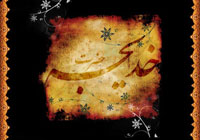
Name : Khadija bint-e-Khawailad(SA) Title : Umm-ul-Momineen Agnomen: Tahira Father : Khawailad bin Asad Mother : Fatemah bint-e-Zaedeh Birth : Makkah Death : 10th Ramazan 3 years before Hijrah at the age of 64 years. Buried : in Makkah
Birth and Geneology
Hazrat Khadija(SA) was the first wife of the Holy Prophet(pbuh&hf). She was born in Makka. Her father's name was Khuwaylid bin Asad and he was a wealthy trader.
The Geneology of both Prophet Mohammad(pbuh&hf) and Hazrat Khadija(SA) was the same reaching upto Qusayy.

Her mother and father both died within 10 years of each other. Their wealth was divided amongst the children but it was Hazrat khadija(SA) who took over the family business and expanded it. With the profit she made she helped the poor, widows, orphans, sick and the disabled people of Makka.
She had a cousin called Waraqa bin Naufal who was very learned man and who was not an idol worshipper. Both Waraqa and Hazrat Khadija were monothiests and believed in one Allah.
First contact with Prophet Mohammad(pbuh&hf)
Because of her excellent Akhlaq the Arabs (who at that time used to look down upon women) called her Tahira - the pure one. She was also known as the 'Princess of Makkah' because of her wealth. A lot of Arab nobles and princess wanted to marry her but she refused all of them.
In 595 AD, Hazrat Khadija was looking for someone to be in charge of her caravan to Syria. Hazrat Abu Talib(AS) suggested the Prophet Mohammad(pbuh&hf) to her. She had heard of his trustworthiness and agreed to employ him although he did not have much trading experience. To help him she sent her slave Maysara.
The trading caravan was a great success and when Hazrat Khadija(SA) heard of the Prophet's skills and excellent conduct, she became his admirer.
Marriage with Prophet Mohammad(pbuh&hf)
Soon it was arranged for Hazrat Khadija(SA) to be married to the Prophet Mohammad(pbuh&hf). At that time, Prophet Mohammad(pbuh&hf) was aged 25 and Hazrat Khadija(SA) was 40 years of age.
According to Shiite tradition, this was her first marriage and that she was not a widow as is narrated by non-shiite sources. Hazrat Abu Talib(AS) read the Nikah on behalf of the Prophet whilst Waqara bin Noufal read it for Hazrat Khadija.
Hazrat Abu Talib(AS) paid the mehr for his nephew and fed the people of Makka for 3 days in celebration. Hazrat Khadija too fed the people. The marriage was a very happy one and their first child was a son called Qasim. The second was Abdullah. Both died in infancy. Their third and last child was Hazrat Fatema Zahra(SA).
Her services for Islam
When the Prophet used to go to meditate in the cave of Hira on Jabel-e-Noor, it was Hazrat Khadija(SA) herself who would climb up there to give him his food and necesseries. She was the first person to accept Islam as taught by the Prophet(pbuh&hf).
In 616 AD, the Quraish isolated the Bani Hashim (the family of the Prophet) and they took refuge in a ravine called Shib-e-Abu Talib. Hazrat Khadija(SA) was there too and it was her wealth (which she donated for Islam) that sustained the Muslims at that time. The siege lasted for 3 years during which time they experienced hunger, thirst, and the cold and heat of the desert.
Hazrat Khadija(SA) was married to the Holy Prophet(pbuh&hf) for 25 years. Shed died in 619 AD on the 10th of Rmazan 3 years before the Hijrah. When she died nothing was left of her wealth - all of it was served for the propagation of Islam.
She was buried in Makkah in a cloak of the Holy Prophet(pbuh&hf). Hazrat Abu Talib(AS) died in this year too. The Prophet(pbuh&hf) called the year Aam-ul-Huzn (the year of grief).
While Hazrat Khadija(SA) lived, the Holy Prophet(pbuh&hf) did not marry another woman and in later years he always said that she was the best of his wives.
He also said that she was one of the four perfect women who had ever lived. The other three are Hazrat Aasiya, the wife of Firaun, Hazrat Maryam, the mother of Prophet Isa(AS), and Hazrat Fatima Zahra(s.a.).
Comments
You have no rights to post comments
Received Clips
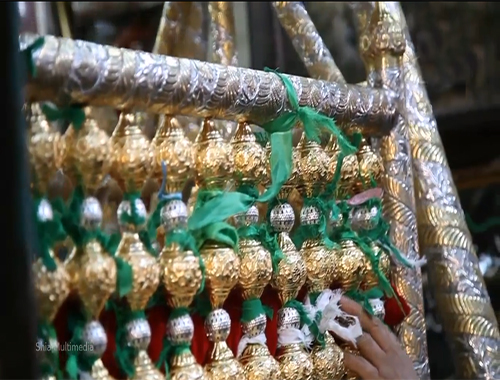
Maqam Ali Asghar (A.S)
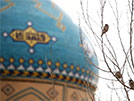
اَللَّهُمَّ يَا ذَاَ ٱلْمِنَنِ ٱلسَّابِغ...

Allah creature-transparent fish

Hazrat Abbas (A.S) the true outlet
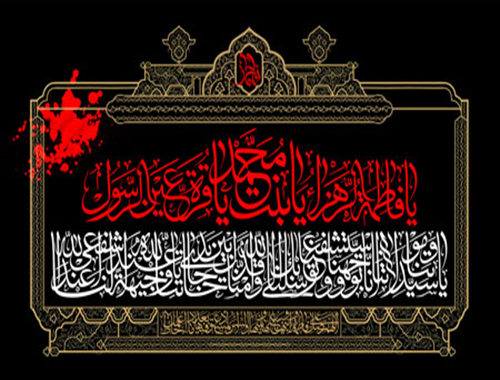
Peace (Salam) be upon you. Ya Fatimah (S...


Sewing the flag of a piece of heaven
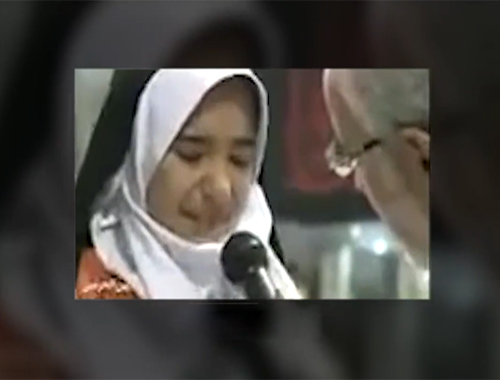
Tears of Azaa - Hazrat Roqayyah (S.A)
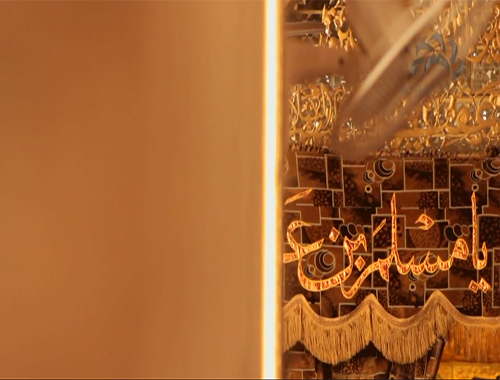
Muslim ibn Aqeel, The Lonely Warrior

Scientific Miracles of the Quran

The 40th day
More Clips ...
Live From :
- Najaf ( The Holy Shrine of Imam Ali )
- Karbala (The Holy Shrine of Imam Hussein (AS))
- Karbala (The Holy Shrine of Hazrat Abbas)
- Kadhemein ( The Holy Shrine of Imam Kazim & Imam Jawad )
- Live From Mashhad - The Enqelab Yard
- Live From Mashhad - al Rawdha
- Live From Mashhad-The Jomhouri Yard

| sibtayn[at]sibtayn.com |
We’re fighting to restore access to 500,000+ books in court this week. Join us!
Internet Archive Audio

- This Just In
- Grateful Dead
- Old Time Radio
- 78 RPMs and Cylinder Recordings
- Audio Books & Poetry
- Computers, Technology and Science
- Music, Arts & Culture
- News & Public Affairs
- Spirituality & Religion
- Radio News Archive

- Flickr Commons
- Occupy Wall Street Flickr
- NASA Images
- Solar System Collection
- Ames Research Center

- All Software
- Old School Emulation
- MS-DOS Games
- Historical Software
- Classic PC Games
- Software Library
- Kodi Archive and Support File
- Vintage Software
- CD-ROM Software
- CD-ROM Software Library
- Software Sites
- Tucows Software Library
- Shareware CD-ROMs
- Software Capsules Compilation
- CD-ROM Images
- ZX Spectrum
- DOOM Level CD

- Smithsonian Libraries
- FEDLINK (US)
- Lincoln Collection
- American Libraries
- Canadian Libraries
- Universal Library
- Project Gutenberg
- Children's Library
- Biodiversity Heritage Library
- Books by Language
- Additional Collections

- Prelinger Archives
- Democracy Now!
- Occupy Wall Street
- TV NSA Clip Library
- Animation & Cartoons
- Arts & Music
- Computers & Technology
- Cultural & Academic Films
- Ephemeral Films
- Sports Videos
- Videogame Videos
- Youth Media
Search the history of over 866 billion web pages on the Internet.
Mobile Apps
- Wayback Machine (iOS)
- Wayback Machine (Android)
Browser Extensions
Archive-it subscription.
- Explore the Collections
- Build Collections
Save Page Now
Capture a web page as it appears now for use as a trusted citation in the future.
Please enter a valid web address
- Donate Donate icon An illustration of a heart shape
Seerat Hazrat Khadija Tul Kubra / سیرت حضرت خدیجتہ الکبری
Bookreader item preview, share or embed this item, flag this item for.
- Graphic Violence
- Explicit Sexual Content
- Hate Speech
- Misinformation/Disinformation
- Marketing/Phishing/Advertising
- Misleading/Inaccurate/Missing Metadata
plus-circle Add Review comment Reviews
2,901 Views
DOWNLOAD OPTIONS
For users with print-disabilities
IN COLLECTIONS
Uploaded by زوہیب حسن عطاری on April 27, 2019
SIMILAR ITEMS (based on metadata)

- Sunni & Shi’a
- Resurrection & Afterlife
- God & His Attributes
- Prophethood & Imamate
- Comparative Religion
- Spirituality
- Hadith Sciences
- Hadith Collections
- Qur’an Commentaries
- Qur’anic Sciences
- Art, Images and Calligraphy
- Prophet Muhammad
- Ahl al-Bayt
- Early Scholars
- Sunni Scholars
- Shia Scholars
- Zaydi Scholars
- Ismaili Scholars
- Other Scholars
- Politics & Current Affairs
- Fatima al-Zahra
- Early Islamic History
- Imam al-Husayn and Karbala
- Imam al-Mahdi
- Death and Dying
- Hajj (Pilgrimage)
- Zakat and Khums (Charity)
- Islamic Laws
- Hijab (Islamic Modest Dress)
- Salaat (Ritual Prayer)
- Supplications
- Miscellaneous
Khadijah, Daughter of Khuwaylid, Wife of Prophet Muhammad

If you wish to research the life of this great lady, and if you do not have al-Majlisi's 111-volume encyclopedia titled Bihar al-Anwar , the best references are: al-Sayyuti's Tarikh al Khulafa , Abul-Faraj al- Isfahni's Aghani , Ibn Hisham's Seera , Muhammad ibn Ishaq's Seerat Rasool-Allah , and Tarikh al-Rusul wal Muluk by Abu Ja`far Muhammad ibn Jarir al-Tabari (839-923 A.D.). Of all these books, only al-Tabari's Tarikh is being translated (by more than one translator and in several volumes) into English. One publisher of Tabari's Tarikh is the press of the State University of New York (SUNY). This article has utilized a number of Arabic and English references, and it is written especially for those who appreciate history, our great teacher, be they Muslims or non- Muslims, and who aspire to learn from it.
"Islam did not rise except through Ali's sword and Khadijah's wealth," a saying goes. Khadijah al-Kubra daughter of Khuwaylid ibn (son of) Asad ibn Abdul-`Uzza ibn Qusayy belonged to the clan of Banu Hashim of the tribe of Banu Asad. She was a distant cousin of her husband the Messenger of Allah, Muhammad ibn Abdullah ibn Abdul-Muttalib ibn Hashim ibn Abd Manaf ibn Qusayy, Allah's peace and blessings with him and his progeny. Qusayy, then, is the ancestor of all clans belonging to Quraish. According to some historians, Quraish's real name was Fahr, and he was son of Malik son of Madar son of Kananah son of Khuzaimah son of Mudrikah son of Ilyas son of Mazar son of Nazar son of Ma`ad son of Adnan son of Isma`eel (Ishamel) son of Ibrahim (Abraham) son of Sam son of Noah, peace and blessings of Allah with the prophets from among his ancestors.
According to a number of sources, Khadijah was born in 565 A.D. and died in 620, at the age of 55, but some historians say that she dies ten years later. Khadijah's mother, who died around 575 A.D., was Fatima daughter of Za'ida ibn al-Asam of Banu `Amir ibn Lu’ayy ibn Ghalib, also a distant relative of Prophet Muhammad (ص). Khadijah's father, who died around 585 A.D., belonged to the Abd al-`Uzza clan of the tribe of Quraish. Like many other Quraishis, he was a merchant, a successful businessman whose vast wealth and business talents were inherited by Khadijah and whom the latter succeeded in faring with the family's vast wealth. It is said that when Quraish's trade caravans gathered to embark upon their lengthy and arduous journey either to Syria during the summer or to Yemen during the winter, Khadijah's caravan equaled the caravans of all other traders of Quraish put together.

Although the society in which Khadijah was born was terribly male chauvinistic, Khadijah earned two titles: Ameerat Quraish , Princess of Quraish, and at-Tahira , the Pure One, due to her impeccable personality and virtuous character, not to mention her honorable descent. She used to feed and clothe the poor, assist her relatives financially, and even provide for the marriage of those of her kin who could not otherwise have had means to marry.
By 585 A.D., Khadijah was left an orphan. Despite that, and after having married twice__and twice lost her husband to the ravaging wars with which Arabia was afflicted__, she had no mind to marry a third time though she was sought for marriage by many honorable and highly respected men of the Arabian peninsula throughout which she was quite famous due to her business dealings.
She simply hated the thought of being widowed for a third time. Her first husband was “Abu (father of) Halah”, namely Hind ibn Zar’ah, who belonged to Banu `Adiyy, and the second was Ateeq ibn `Aa’ith. Both men belonged to Banu Makhzoom. By her first husband, she gave birth to a son who was named after his father, Hind, and who came to be one of the greatest sahabis (companions of the Holy Prophet). He participated in both battles of Badr and Uhud, and he is also famous for describing the Prophet's physique.
He was martyred during the Battle of the Camel in which he fought on the side of Imam Ali ibn Abu Talib (ع), although some historians say that he died in Basra. All biography accounts describe Hind as an outspoken orator, a man of righteousness and generosity, and one who took extreme caution while quoting the Messenger of Allah (ص). Besides him, Khadijah gave birth by Abu Halah to two other sons: at-Tahir, and, of course, Halah, who is not very well known to historians despite the fact that his father is nicknamed after him.
Who were Khadijah's children by her second husband? This is another controversy that revolves around the other daughters or step-daughters of the Prophet (ص) besides Fatima (ع). These daughters, chronologically arranged, are: Zainab, Ruqayya, and Ummu Kulthoom. Some historians say that these were Khadijah's daughters by her second husband, whereas others insist they were her daughters by Muhammad (ص). The first view is held by Sayyid Safdar Husayn in his book The Early History of Islam in which he bases his conclusion on the contents of al-Sayyuti's famous work Tarikh al-Khulafa wal Muluk (history of the caliphs and kings; do not confuse it with Tabari's Tarikh; both books bear the same title, and this is not uncommon at all). We hope some of our Muslim sisters who read this text will be tempted to research this subject. Here is a brief account of Khadijah's daughters:
Zainab, their oldest, was born before the prophetic mission and was married to Abul-`As ibn al- Rabee`. She had accepted Islam before her husband, and she participated in the migration from Mecca to Medina. She died early in 8 A.H. (630 A.D.) and was buried in Jannatul Baqee` where her grave can still be seen defying the passage of time. Ruqayya and Ummu Kulthoom married two of Abu Lahab's sons. Abu Lahab, one of the Prophet's eleven uncles, stubbornly and openly rejected his nephew's preaching; therefore, he was condemned in the Mecci Chapter 111 of the Holy Qur'an, a chapter named after him.
Having come to know about such condemnation, he became furious and said to his sons, "There shall be no kinship between you and me unless you part with these daughters of Muhammed," whereupon they divorced them instantly. Ruqayya married the third caliph, `Uthman ibn `Affan, and migrated with him to Ethiopia in 615 A.D., five years after the inception of the prophetic mission, accompanied by no more than nine others. That was the first of two such migrations. After coming back home, she died in Medina in 2 A.H. (624 A.D.) and was buried at Jannatul Baqee`.
`Uthman then married her sister, Ummu Kulthoom, in Rabi` al-Awwal of the next (third) Hijri year (September of 624 A.D.). Ummu Kulthoom lived with her husband for about six years before dying in 9 A.H. (630 A.D.), leaving no children. Some Muslims tell a different story, claiming that although Khadijah was much older than the Prophet (ﺹ), she was still a virgin…, and surely Allah knows. These Muslims are reminded that the Prophet married only one single virgin wife: Lady ‘Aisha daughter of first caliph Abu Bakr. All other wives were previously married. What is wrong with that? Prophet Sulayman (Solomon) married a widow, too, and so did many other prophets and messengers of Allah.
One particular quality in Khadijah was quite interesting, probably more so than any of her other qualities mentioned above: She, unlike her people, never believed in nor worshipped idols. A very small number of Christians and Jews lived in Mecca at the time and a fairly large number of Jews lived in Medina in fortified communities, small and large, the largest being Khaybar. Waraqah ibn Nawfal, one of Khadijah's cousins (some say he was her uncle), had embraced Christianity and was a pious monk who believed in the Unity of the Almighty, just as all early Christians did, that is, before the concept of the Trinity crept into the Christian faith, widening the theological differences among the believers in Christ (ع).
Let us digress here for a moment and try to trace history back to the time when the Trinity became "officially" a tenet of the Christian faith. You see, the only Christian Gospel accepted by Muslims as accurate, authentic and saved from distortion is that of St. Barnabas, a Cypriot companion of St. Paul (originally Saul), which was not canonized by the Council of Nicaea of 325 A.D. where the Trinity was incorporated into the Christian beliefs for the very first time. Remember, this happened in the fourth century after Christ!
For almost four hundred years, not many people among the Christians had even heard of the Trinity. That Council of Nicaea, which was actually boycotted by many Christian churches around the world, was called for by the Byzantine emperor Constantine I (288 - 337 A.D.), or Constantine the Great, who built the now Turkish city Constantinople in 330 A.D. to dedicate it to Jesus' mother, Virgin Mary. Constantine's objective behind holding the Nicaea Conference was to settle the disputes among various Christian sects about what constituted Christianity and what did not, but the said Conference created more problems than it solved. It was boycotted by a number of Christian sects that did not endorse its resolutions.
Now let us go back to Waraqah ibn Nawfal. This scholar reportedly had translated the Bible from Hebrew into Arabic. His likes could be counted on the fingers of one hand during those days in the entire populous metropolis of Mecca, or Becca, or Ummul-Qura (the mother town), a major commercial center at the crossroads of trade caravans linking Arabia with India, Persia, China, and Byzantium, a city that had its own Red Sea port at Shu`ayba which contributed to trade and business in it.
Most importantly, Mecca housed the Ka`ba, the cubic "House of God" which has always been sought for pilgrimage and which used to be circled by naked polytheist "pilgrims" who kept their idols, numbering 360 small and big, male and female, inside it and on its roof-top. Among those idols was one for Abraham and another for Ishmael, each carrying divine arrows in his hands. Hubal, a huge idol in the shape of a man, was given as a gift by the Moabites of Syria to the tribesmen of Khuza`ah, and it was Mecca's chief idol.
Two other idols of significance were those of the Lat, a grey granite image which was the female deity of the tribe of Thaqif in nearby Taif, and the Uzza, also a female deity carved out of a block of granite about twenty feet long. These were regarded as the wives of the Almighty... Each tribe had its own idol, and the wealthy bought and kept a number of idols at home. The institute of pilgrimage was already there; it simply was not being observed properly, and so was the belief in Allah Whom the Arabs regarded as their Supreme or chief deity. Besides Paganism, other "religions" in Arabia included star worship and fetishism.
The Jews of Medina had migrated from Palestine and settled there waiting for the coming of a new Prophet from the seed of Abraham (ع) in whom they said they intended to believe and to be the foremost in following, something which unfortunately did not materialize; on the contrary, they joined ranks with the Pagans to fight the spread of Islam. Only a handful of them embraced Islam, including one man who was a neighbor of Muhammad (ص); he lived in the same alley in Mecca where Khadijah's house stood; his wife, also Jewish, used to collect dry thorny bushes from the desert just to throw them in the Prophet's way.
Since Khadijah did not travel with her trade caravans, she had always had to rely on someone else to act as her agent to trade on her behalf and to receive an agreed upon commission in return. In 595 A.D., Khadijah needed an agent to trade in her merchandise going to Syria, and it was then that a number of agents whom she knew before and trusted, as well as some of her own relatives, particularly Abu Talib, suggested to her to employ her distant cousin, Muhammad ibn Abdullah (ص). By then, young Muhammad (ص) had already earned the honoring titles of as-Sadiq, the truthful, and al-Amin, the trustworthy.
Muhammad (ص) did not have any practical business experience, but he had twice accompanied his uncle, Abu Talib, on his trade trips and keenly observed how he traded, bartered, bought and sold and conducted business. After all, the people of Quraish were famous for their involvement in trade more than in any other profession. It was not uncommon to hire an agent who did not have a prior experience; so, Khadijah decided to give Muhammad (ص) a chance. He was only 25 years old.
Khadijah sent Muhammad (ص) word through Khazimah ibn Hakim, one of her relatives, offering him twice as much commission as she usually offered her agents to trade on her behalf. She also gave him one of her servants, Maysarah, who was young, brilliant, and talented, to assist him and be his bookkeeper. She also trusted Maysarah's account regarding her new employee's conduct, an account which was most glaring, indeed one which encouraged her to abandon her insistence never to marry again.
Before embarking on his first trip as a businessman representing Khadijah, Muhammad (ص) met with his uncles for last minute briefings and consultations, then he set out on the desert road passing through Wadi al-Qura, Midian, and Diyar Thamud, places with which he was familiar because of having been there at the age of twelve in the company of his uncle, Abu Talib, father of his cousin and later son-in-law Ali (ﻉ). He continued the lengthy journey till he reached Busra (or Bostra) on the highway to the ancient city of Damascus after about one month. It was then the capital of Hawran, one of the southeastern portions of the province of Damascus situated north of the Balqa'.
To scholars of classic literature, Hawran is known by its Greek name Auranitis, and it is described in detail by Yaqut al-Hamawi, Abul-Faraj al-Isfahani, and others. Arab trade caravans used to go there quite often and even beyond it to Damascus and Gaza, and few made it all the way to the Mediterranean shores to unload their precious cargoes of Chinese paper and silk textiles bound for Europe.
What items did Muhammad (ص) carry with him to Busra, and what items did he buy from there? Meccans were not known to be skilled craftsmen, nor did they excel in any profession besides trade, but young Muhammad (ص) might have carried with him a cargo of hides, raisins, perfumes, dried dates, light weight woven items, probably silver bars, and most likely some herbs. He bought what he was instructed by his employer to buy: these items may have included manufactured goods, clothes, a few luxury items to sell to wealthy Meccans, and maybe some household goods.
Gold and silver currencies accepted in Mecca included Roman, Persian, and Indian coins, for Arabs during those times, including those who were much more sophisticated than the ones among whom Muhammad (ص) grew up, such as the Arabs of the southern part of Arabia (Yemen, Hadramout, etc.), did not have a currency of their own; so, barter was more common than cash. The first Arab Islamic currency, by the way, was struck in Damascus by the Umayyad ruler Abd al-Malik ibn Marwan (697-698 A.D.) in 78 A.H. (697 A.D.), 36 years after the establishment of the Umayyad dynasty (661-750).
The time Muhammad (ﺹ) stayed in Busra was no more than a couple of months during which he met many Christians and Jews and noticed the theological differences among the major Christian sects that led to the disassociation of the Copts, the Syrian (Chaldean) Nestorian, and the Armenian Christians from the main churches of Antioch (Antakiya), Rome, and Egyptian Alexandria. Such dissensions and differences of theological viewpoints provided Muhammad (ص) with plenty of food for thought; he contemplated upon them a great deal. He was seen once by Nestor the monk sitting in the shade of a tree as caravans entered the outskirts of Busra, not far from the monk's small monastery. "Who is the man beneath that tree?" inquired Nestor of Maysarah. "A man of Quraish," Maysarah answered, adding, "of the people [the Hashemites] who have guardianship of the Sanctuary (the Ka’ba)." "None other than a Prophet is sitting beneath that tree," said Nestor who had observed some of the signs indicative of Prophethood: two angels (or, according to other reports, two small clouds) were shading Muhammad (ص) from the oppressive heat of the sun. "Is there a glow, a slight redness, around his eyes that never parts with him?" Nestor asked Maysarah. When the latter answered in the affirmative, Nestor said, "He most surely is the very last Prophet; congratulations to whoever believes in him."
One of Muhammad's observations when he was in that Syrian city was the historical fact that a feud was brewing between the Persian and Roman empires, each vying for hegemony over Arabia's fertile crescent. Indeed, such an observation was quite accurate, for after only a few years, a war broke out between the then mightiest nations on earth that ended with the Romans losing it, as the Holy Qur'an tells us in Chapter 30 (The Romans), which was revealed in 7 A.H./615-16 A.D., only a few months after the fall of Jerusalem to the Persians, just to win in a successive one. Only four years prior to that date, the Persians had scored a sweeping victory over the Christians, spreading their control over Aleppo, Antioch, and even Damascus. Muhammad (ص) was concerned about either of these two empires extending its control over the land inhabited by Muhammad's fiercely independent Pagan people.
The loss of Jerusalem, birthplace of Christ, Jesus son of Mary (ع), was a heavy blow to the prestige of Christianity. Most Persians were then following Zoroastrianism, a creed introduced in the 6th century before Christ by Zoroaster (628-551 B.C.), also known as Zarathustra, whose adherents are described as worshippers of the "pyre," the holy fire. "Persia," hence, meant "the land of the worshippers of the pyre, the sacred fire."
Modern day Iran used to be known as "Aryana," land of the Aryan nations and tribes. Not only Iranians, but also Kurds, and even Germans, prided in being Aryans, (Caucasian) Nordics or speakers of an Indo-European dialect. Some Persians had converted to Christianity as we know from Salman al-Farisi who was one such adherent till he fell in captivity, sold in Mecca and freed to be one of the most renown and cherished sahabis and narrators of hadith in Islamic history, so much so that the Prophet of Islam (ص) said, "Salman is one of us, we Ahl al-Bayt (People of the Household of Prophethood)."
The war referred to above was between the then Byzantine (Eastern Roman) emperor Heraclius (575 - 641 A.D.) and the Persian king Khusrau (Khosrow) Parwiz (Parviz) or Chosroes II (d. 628 A.D.). It was one of many wars in which those mighty nations were embroiled and which continued for many centuries. Yet the hands of Divine Providence were already busy paving the path for Islam: The collision between both empires paved the way for the ultimate destruction of the ancient Persian empire and in Islam setting root in that important part of the world.
Moreover, Muhammad's (and, naturally, Khadijah's) offspring came to marry ladies who were born and raised at Persian as well as Roman palaces. Imam Husain ibn Ali ibn Abu Talib (ع), Muhammad's grandson and our Third Holy Imam, married the daughter of the last Persian emperor Jazdagird (Yazdegerd) III son of Shahryar and grandson of this same Khusrau II. Jazdagerd ruled Persia from 632-651 A.D. and lost the Battle of Qadisiyya to the Muslim forces in 636, thus ending the 427-year rule of the Sassanians which extended from 224 A.D. to 651 A.D. Having been defeated, he fled for Media in northwestern Iran, homeland of Persian Mede tribesmen, and from there to Merv, an ancient Central Asian city near modern day Mary in Turkmenistan (until very recently one of the republics of the Soviet Union), where he was killed by a miller. The slain emperor left two daughters who, during their attempt to escape, following the murder of their father, were caught and sold as slaves.
One of them, Shah-Zenan, ended up marrying our Third Holy Imam Husain ibn Ali ibn Abu Talib (ع), whereas her sister married the renown scholar and acclaimed muhaddith (traditionist) Muhammad son of the first Muslim caliph Abu Bakr. Shah-Zenan was awarded a royal treatment and was given a new name in her own Persian mother tongue: Shahr Banu, which means "mistress of the ladies of the city." The marriage between her and Imam Husain (ع) produced our Fourth Holy Imam (Zainul-Abidin, or al-Sajjad) Ali ibn al-Husain ibn Ali ibn Abu Talib (ع).
The profits Khadijah reaped from that trip were twice as much as she had anticipated. Maysarah was more fascinated by Muhammad (ص) than by anything related to the trip. Muhammad (ص), on the other hand, brought back his impressions about what he had seen and heard, impressions which he related to his employer. You see, those trade caravans were the only links contemporary Arabs had with their outside world: They brought them the news of what was going on beyond their drought-ridden and famine-stricken desert and sand dunes.
Waraqah ibn Nawfal, like Bahirah, the monk who had seen and spoken to Muhammad (ص) when Muhammad (ص) was a lad, adhered to the Nestorian Christian sect. He heard the accounts about the personality and conduct of young Muhammad (ص) from both his cousin Khadijah and her servant Maysarah, an account which caused him to meditate for a good while and think about what he had heard.
Raising his head, he said to Khadijah, "Such manners are fit only for the messengers of God. Who knows? Maybe this young man is destined to be one of them." This statement was confirmed a few years later, and Waraqah was the very first man who identified Muhammad (ص) as the Messenger of Allah immediately after Muhammad (ص) had received the first revelation at Hira cave.
The trip's measure of success encouraged Khadijah to employ Muhammad (ص) again on the winter trip to southern Arabia, i.e. Yemen, the land that introduced the coffee beans to the rest of the world, the land where the renown Ma'rib irrigation dam was engineered, the land of Saba' and the renown Balqees, the Arabian Queen of Sheba (Saba') of Himyar, who married King Solomon (Sulayman the wise, peace with him), in 975 B.C. (after the completion of the construction of the famous Solomon's Temple 1 ), the land of natives skilled in gold, silver and other metal handicrafts, not to mention their ingenuity in the textile industry and domestic furniture..., and it may even be the land that gave Arabic its first written script which, as some believe, was modeled after written Amheric, then the official language in Ethiopia and its colonies.
Yemen, at that time, was being ruled by an Ethiopian regent. This time Khadijah offered Muhammad (ص) three times the usual commission. Unfortunately, historians do not tell us much about this second trip except that it was equally profitable to both employer and employee. Some historians do not mention this trip at all.
Khadijah was by then convinced that she had finally found a man who was worthy of her, so much so that she initiated the marriage proposal herself. Muhammad (ص) sat to detail all the business transactions in which he became involved on her behalf, but the wealthy and beautiful lady of Quraish was thinking more about her distant cousin than about those transactions.
She simply fell in love with Muhammad (ص) just as the daughter of the Arabian prophet Shu`ayb had fallen in love with then fugitive prophet Moses (ع) as we are told in 28:25 -26 of the Holy Qur’an (in Surat al-Qasas). Muhammad (ص) was of medium stature, inclined to slimness, with a large head, broad shoulders and the rest of his body perfectly proportioned. His hair and beard were thick and black, not altogether straight but slightly curled. His hair reached midway between the lobes of his ears and shoulders, and his beard was of a length to match.
He had a noble breadth of forehead and the ovals of his large eyes were wide, with exceptionally long lashes and extensive brows, slightly arched but not joined. His eyes were said to have been black, but other accounts say they were brown, or light brown. His nose was aquiline and his mouth was finely shaped. Although he let his beard grow, he never allowed the hair of his moustache to protrude over his upper lip. His skin was white but tanned by the sun. And there was a light on his face, a glow, the same light that had shone from his father, but it was more, much more powerful, and it was especially apparent on his broad forehead and in his eyes which were remarkably luminous.
By the time he was gone, Khadijah sought the advice of a friend of hers named Nufaysa daughter of Umayyah. The latter offered to approach him on her behalf and, if possible, arrange a marriage between them. Nufaysa came to Muhammad (ص) and asked him why he had not married yet. "I have no means to marry," he answered. "But if you were given the means," she said, "and if you were bidden to an alliance where there is beauty, wealth, nobility and abundance, would you not then consent?!" "Who is she?!" he excitedly inquired. "Khadijah," said Nufaysa. "And how could such a marriage be mine?!" he asked. "Leave that to me!" was her answer. "For my part," he said, "I am willing." Nufaysa returned with these glad tidings to Khadijah who then sent word to Muhammad (ص) asking him to come to her. When he came, she said to him:
O son of my uncle! I love you for your kinship with me, and for that you are ever in the center, not being a partisan among the people for this or for that. And I love you for your trustworthiness, and for the beauty of your character and the truth of your speech.
Then she offered herself in marriage to him, and they agreed that he should speak to his uncles and she would speak to her uncle, `Amr son of Asad, since her father had died. It was Hamzah, despite being relatively young, whom the Hashemites delegated to represent them on this marriage occasion, since he was most closely related to them through the clan of Asad; his sister, Safiyya, had just married Khadijah's brother, `Awwam. It was Abu Talib, Muhammad's uncle, who delivered the marriage sermon saying,
All praise is due to Allah Who has made us the progeny of Ibrahim (Abraham), the seed of Isma`eel (Ishmael), the descendants of Ma`ad, the substance of Mudar, and Who made us the custodians of His House and the servants of its sacred precincts, making for us a House sought for pilgrimage and a shrine of security, and He also gave us authority over the people. This nephew of mine, Muhammad (ص), cannot be compared with any other man: If you compare his wealth with that of others, you will not find him a man of wealth, for wealth is a vanishing shadow and a fickle thing. Muhammad (ص) is a man whose lineage you all know, and he has sought Khadijah daughter of Khuwaylid for marriage, offering her such-and-such of the dower of my own wealth.
Nawfal then stood and said,
All praise is due to Allah Who has made us just as you have mentioned and preferred us over those whom you have indicated, for we, indeed, are the masters of Arabs and their leaders, and you all are worthy of this (bond of marriage). The tribe (Quraish) does not deny any of your merits, nor does anyone else dispute your lofty status and prestige. And we, furthermore, wish to be joined to your rope; so, bear witness to my words, O people of Quraish! I have given Khadijah daughter of Khuwaylid in marriage to Muhammad ibn Abdullah for the dower of four hundred dinars.
Then Nawfal paused, whereupon Abu Talib said to him, "I wished her uncle had joined you (in making this statement)." Hearing that, Khadijah's uncle stood and said, "Bear witness, O men of Quraish, that I have given Khadijah daughter of Khuwaylid in marriage to Muhammad ibn Abdullah."
These details and more are recorded in Ibn Hisham's Seera . After his marriage, Muhammad (ص) moved from his uncle's house to live with his wife in her house which stood at the smiths' market, an alley branching out of metropolitan Mecca's long main bazaar, behind the mas`a , the place where the pilgrims perform the seven circles during the hajj or `umra .
In that house Fatima (ع) was born and the revelation descended upon the Messenger of Allah (ص) many times. This house, as well as the one in which the Prophet of Islam (ص) was born (which stood approximately 50 meters northwards), were both demolished by the ignorant and fanatical Wahhabi rulers of Saudi Arabia in 1413 A.H./1993 A.D.... The grave sites of many family members and companions of the Holy Prophet (ص) were all demolished by the same Wahhabis in 1343 A.H./1924 A.D. against the wish and despite the denunciation of the adherents of all other Muslim sects and schools of thought world-wide.
The marriage was a very happy one, and it produced a lady who was one of the four perfect women in all the history of mankind: Fatima daughter of Muhammad (ص). Before her, Qasim and Abdullah were born, but they both died at infancy. By the time Khadijah got married, she was quite a wealthy lady, so wealthy that she felt no need to keep trading and increasing her wealth; instead, she decided to retire and enjoy a comfortable life with her husband who, on his part, preferred an ascetic life to that of money making.
The Messenger of Allah (ص) had no desire to accumulate wealth; that was not the purpose for which he, peace and blessings of Allah with him and his progeny, was created. He was created to be the savior of mankind from the darkness of ignorance, idol worship, polytheism, misery, poverty, injustice, oppression, and immorality. He very much loved to meditate, though his meditation deepened his grief at seeing his society sunk so low in immorality, lawlessness, and the absence of any sort of protection for those who were weak and oppressed.
Khadijah's period of happiness lasted no more than 15 years after which her husband, now the Messenger of Allah (ص), started his mission to invite people to the Oneness of God, to equality between men and women, and to an end to the evils of the day. Muhammad (ص) was forty years old when the first verses of the Holy Qur'an were revealed to him. They were the first verses of Surat al-Alaq (chapter 96), and they were revealed during the month of Ramadan 13 years before the Hijra, at the cave of Hira in Jabal al-Noor (the mountain of light), his favorite place for isolation and meditation, a place which is now visited by many pilgrims. Muhammad (ص) went back home heavy-hearted, profoundly perplexed, deeply impressed by the sight of arch-angel Gabriel and by the depth of meaning implied in those beautiful words:
In the Name of Allah, the Most Gracious, the Most Merciful
Proclaim (or read)! In the Name of your Lord and Cherisher who created (everything). (He) created man of a (mere) clot of congealed blood. Proclaim! And your Lord is the Most Bountiful Who taught (the use of) the pen, Who taught man that which he knew not... (Qur'an, 96:1 -5)
He felt feverish, so he asked to be wrapped and, once he felt better, he narrated what he had seen and heard to his faithful and supportive wife.
"By Allah," Khadijah said, "Allah shall never subject you to any indignity..., for you always maintain your ties with those of your kin, and you are always generous in giving. You are diligent, and you seek what others regard as unattainable. You cool the eyes of your guest, and you lend your support to those who seek justice and redress. Stay firm, O cousin, for by Allah I know that He will not deal with you except most beautifully, and I testify that you are the awaited Prophet in this nation, and your time, if Allah wills, has come."
After a short while, Khadijah told her husband about the prediction of the Syrian monk Buhayra regarding Muhammed's Prophethood, and about her dialogue with both her servant Maysarah, who had informed her of what Bahirah (or Buhayrah) had said, and with her cousin Waraqah ibn Nawfal. She then accompanied her husband to Waraqah's house to narrate the whole incident. "Let me hear it in your own words," Nawfal said to Muhammad (ص), adding, "O noble master!" Having heard the Prophet's words, Nawfal took his time to select his words very carefully; he said, "By Allah, this is the prediction which had been conveyed to Moses (ع) and with which the Children of Israel are familiar! [Moses] had said: `O how I wish I could be present when Muhammad (ص) is delegated with Prophethood to support his mission and to assist him!'"

It was only natural for Khadijah to receive her share of the harassment meted to him by none other than those who, not long ago, used to call him as-Sadiq, al-Amin. Khadijah did not hesitate to embrace Islam at all, knowing that her husband could not have put forth any false claim.
Yahya ibn `Afeef is quoted as saying that he once came, during the jahiliyya (the period preceding the advent of Islam), to Mecca to be hosted by al-Abbas ibn Abdul-Muttalib, one of the Prophet's uncles mentioned above. "When the sun started rising," says he, "I saw a man who came out of a place not far from us, faced the Ka`ba and started performing his prayers.
He hardly started before being joined by a young boy who stood on his right side, then by a woman who stood behind them. When he bowed down, the young boy and the woman bowed, and when he stood up straight, they, too, did likewise. When he prostrated, they, too, prostrated." Then he expressed his amazement at that, saying to al-Abbas: "This is quite strange, O Abbas!" "Is it, really?" retorted al-Abbas. "Do you know who he is?" al-Abbas asked his guest who answered in the negative. "He is Muhammadibn Abdullah, my nephew. Do you know who the young boy is?" asked he again. "No, indeed," answered the guest. "He is Ali son of Abu Talib. Do you know who the woman is?" The answer came again in the negative, to which al-Abbas said, "She is Khadijah daughter of Khuwaylid, my nephew's wife." This incident is included in the books of both Imam Ahmad and al-Tirmithi, each detailing it in his own Sahih book. And she bore patiently in the face of persecution to which her revered husband and his small band of believers were exposed at the hands of the polytheists and aristocrats of Quraish, sacrificing her vast wealth to promote Islam, seeking Allah's Pleasure.
Among Khadijah's merits was her being one of the four most perfect of all women of mankind, the other three being: Fatima (ع) daughter of Muhammad (ص), Maryam bint `Umran (Mary daughter of Amram), mother of Christ (ع) and niece of prophet Zakariyya (Zacharias) and Ishba (Elizabeth), and `Asiya daughter of Muzahim, wife of Pharaoh. Prophet Zakariyya, as the reader knows, was the father of Yahya (John the Baptist), the latter being only a few months older than prophet Jesus (ع).
The Prophet of Islam (ص) used to talk about Khadijah quite often after her demise, so much so that his youngest wife, Ayisha daughter of Abu Bakr, felt extremely jealous and said to him, "... But she was only an old woman with red eyes, and Allah has compensated you with a better and younger wife (meaning herself)." This caused him (ص) to be very indignant, so he said, "No, indeed; He has not compensated me with someone better than her. She believed in me when all others disbelieved; she held me truthful when others called me a liar; she sheltered me when others abandoned me; she comforted me when others shunned me; and Allah granted me children by her while depriving me of children by other women."
Imam Ahmad ibn Hanbal, Abu Hatim, al-Dulabi, al-Tabari, and many others, all quote Ayisha as saying: "One day, the Messenger of Allah (ص) mentioned Khadijah affectionately, so I was carried away by jealousy and said about her what I should not have said. It was then that his face changed color in a way I never saw it change except when he (ص) was receiving revelation, so I realized what I had done and felt overwhelmed by regret to the extent that I could not help uttering these words: `O Lord! If You remove the anger of Your Messenger right now, I pledge not to ever speak ill of her as long as I live.' Having seen that, he forgave me and narrated to me some of her merits."
Both Muslim and Bukhari indicate in their respective Sahih books that among Khadijah's merits was the fact that the Lord of Dignity ordered Jibraeel (Gabriel), peace with him, to convey His regards to her. Gabriel said to Muhammad (ص): "O Muhammed! Khadijah is bringing you a bowl of food; when she comes to you, tell her that her Lord greets her, and convey my greeting, too, to her." When he (ص) did so, she said: "O Allah! You are the Peace, and is the source of all peace, to you peace returns, Praised and Exalted are You, O One with the Greatness and Honor, and may with Gabriel be peace."
اللهم أنت السلام و منك السلام و اليك يرجع السلام، تباركت و تعاليت يا ذا الجلال و الاكرام، و على جبرائيل السلام
Lord! You are the peace; from you is the peace, and to you returns the peace; Praised and Exalted are You, O One with all the Greatness and Honors
Khadijah died of an attack of fever on the tenth or eleventh day of the month of Ramadan, ten years after the start of the Prophetic mission (in the year 619 A.D.), 24 years after her marriage with Muhammad (ص), and she was buried at Hajun in the outskirts of Mecca. The Messenger of Allah (ص) dug her grave and buried her... Funeral prayers ( salat al janaza ) had not yet been mandated in Islam. It is reported that by the time she died, her entire wealth had already been spent to promote Islam; she left not a single gold dinar nor a single silver dirham, nor anything more or less...
يَا أَيَّتُهَا النَّفْسُ الْمُطْمَئِنَّةُ ارْجِعِي إِلَى رَبِّكِ رَاضِيَةً مَّرْضِيَّةً، فَادْخُلِي فِي عِبَادِي وَادْخُلِي جَنَّتِي
O soul that are at rest! Return to your Lord, well-pleased (with Him), well-pleasing (Him), so enter among My servants, and enter into My garden. (Qur'an, 89:27 -30)
(This paper about Khadijah al-Kubra, may the Almighty reward her on behalf of the Muslim umma from the first generations to the last, was written and widely circulated by myself, author of this book, on May 12, 1994, when I was living in Falls Church, Virginia, U.S.A. You are free to circulate it or post it on your Internet’s web site so you may earn rewards from the Almighty Who loves scholars and scholarship and those who promote knowledge about His Prophets and Messengers, peace and blessings with them all.)
- 1. This temple was built by Solomon (Prophet Sulayman) to express his gratitude for what the Almighty had granted him. Solomon had in advance obtained his Lord's permission to erect it. A glimpse of its grandeur is described in the Holy Qur'an in 27:44 thus: "It was said to her (to Balqees, the Queen of Sheba): Enter the palace; but when she saw it, she deemed it to be a great expanse of water," that is, its marble floors were clear and reflective like glass, reflecting her image as water does. This temple was later ordered by Solomon to be demolished in its entirety, and the claim of the Jews that the Aqsa mosque in Jerusalem is built on its very foundations is false and a big lie. The Jews plot to demolish the Aqsa mosque in order to rebuild Solomon's Temple on its foundations. Jews intend to do so at the right time, when they realize that the Muslims of the world, because of the weakness and hypocrisy of their rulers, are too weak to stand between them and the achievement of their most vile goals, and when the "Christian" West will be ready, more than now, to help them achieve their objectives. The West has been supporting the Jews against the Muslims, and there will never be any reversal to this trend... We are Allah's, and to Him shall we return...
Ilmlelo.com
Enjoy The Applications
seerat un nabi in urdu essay with headings – سیرت النبی پر ایک مضمون
Hazrat Muhammad (sallallahu alaihi wasallam ) is the central figure of Islam and is considered its most perfect human being. He was born in Makkah in 570 CE and belonged to the Quraish tribe. At an early age, he displayed qualities that distinguished him from others. He was highly intelligent and deeply compassionate. At the age of forty, he received the first revelation from Allah through the Archangel Gabriel.
In this post, we write seerat un nabi in Urdu essay for class 12,8,6 and others.
seerat un nabi in urdu essay With headings – سیرت النبی پر ایک مضمون

The life of Hazrat Muhammad (PBUH) is an excellent example for Muslims to follow. He was a perfect example of a human being, and his teachings continue to guide and inspire millions of people around the world.
Born in Mecca in 570 CE, Muhammad (PBUH) was orphaned at a young age and raised by his grandfather and uncle. From a young age, he was known for his truthfulness, honesty and integrity. He was a successful businessman and was married to Khadijah, a wealthy widow, at the age of 25.
He was highly intelligent and deeply compassionate. The message that he received was eventually compiled as the Holy Qur’an.
This blog post provides a beautifully written essay on seerat un nabi in urdu. It is a great read for anyone looking to learn more about the Prophet’s life and teachings. Please leave your comments and share them with your friends.
you can also read Taleem E Niswan Essay in Urdu
seerat un nabi is the complete biography of our beloved hazrat muhammad sallallahu alaihi wasallam
six months before hazrat muhammad (P.B.U.H) was born
Hazrat Abdullah
Yes is it you can also learn and write this essay in your exams
Related Posts
My favourite game cricket essay in urdu | میرا پسندیدہ کھیل پر ایک مضمون.
December 7, 2023
waldain ka ehtram essay in urdu | والدین کا احترام مضمون اردو
Essay on hockey in pakistan in urdu | اردو میں پاکستان میں ہاکی پر مضمون.
About Admin
Leave a reply cancel reply.
Your email address will not be published. Required fields are marked *
Save my name, email, and website in this browser for the next time I comment.
Khadijah, First Woman of Islam
Part of Building Bridges
Remarkable women have done remarkable things in every part of the world in every time in history. Most of their accomplishments were not recorded in history books. While just as brilliant, creative, and courageous as men, women in many societies have been valued less, and often their contributions discounted, not recorded at all, or attributed to men. Notable exceptions were women so extraordinary their worth could not be ignored or minimized. One such woman, revered by billions, is Khadijah bint Khuwaylid (Khadijah, daughter of Khuwaylid), born in Mekka in 555 CE.
Khadijah was born to a life of privilege. Her family was important in Mekka and quite wealthy; she could have lived a life of ease all her days. Khadijah, however, was an intelligent and industrious young woman who enjoyed business and became very skilled. When her father died, the young woman took charge of the family business, which thrived and grew under her direction. Compassionate as well as hard-working, Khadijah gave a great deal of money to help others—assisting the poor, sick, disabled, widows, orphans, and giving poor couples money to marry.
Twice Khadijah married, and when each of her husbands died, she overcame her grief and continued to rear her small children and run her successful caravan business by herself. Khadijah had many employees, including the important position of her agent, who traveled with her caravans, negotiated deals in other cities, and took charge of the large amounts of money involved in the trading business.
When Khadijah was 40 years old, she was widely known in Arabia as a powerful, smart, independent woman, and many men wanted to work for her. However, when she needed to hire an agent, she did not hire any of the men who eagerly sought the job. Instead, she selected a hard-working young man named Muhammad who had the reputation of being honest and diligent. Muhammad was only 25 years old when he accepted the job, but he proved to be an excellent employee and a courteous and ethical man. Within a fairly short time Khadijah concluded he would be a suitable partner in life, as well, and so she, Khadijah, proposed marriage to Muhammad.
The difference in their ages was 15 years, but there was never a question of their complete devotion to each other. Muhammad continued to work for Khadijah's caravan business, and they had six children together, although only one of the children, a girl named Fatimah, lived to adulthood. Khadijah and Muhammad lived happily in this busy, productive way for 15 years, but when Muhammad was 40 their lives took a radical turn.
Muhammad meditated in a cave outside Mecca from time to time, and one afternoon he returned home from the cave exhausted and frightened, calling to Khadijah for help. He told her the angel Gabriel had spoken to him with a message from God, but he did not know what it meant. Khadijah believed Muhammad. She assured him he was sane and that this news was good, not fearful. Khadijah became the first convert to Islam, and remained Muhammad's most staunch believer, ally, and friend through the trials that lay ahead.
Khadijah encouraged Muhammad to leave the business and preach full time. She financially supported him so he could preach with all his heart and energy; she sustained him in this way for the rest of her life. When necessary, she supported his followers, too. In the early years, when the growth of Islam was slow and increasingly dangerous, Khadijah protected Muhammad with her political power and influence. As time passed, Muhammad's compelling word gained followers, and just as steadily, city leaders became more alarmed and wanted Muhammad arrested. Eventually, when the authorities could not be kept away and finally came for him, Khadijah left her comfortable home to join her husband, Muhammad, in hiding. Three years of rugged living followed, during which Khadijah depleted her entire large fortune supporting the followers of Islam. Her wealth was gone and her health strained to the breaking point by deprivation. However, her spirits remained high and her devotion never flagged. Finally, the brave, honorable, and faithful Khadijah became ill and died.
The year Khadijah died was 619 CE. She was 65 years old, and she and Muhammad had been partners for 25 years. Muhammad's uncle Abu Talib also died that year, and Muhammad called 619 the Year of Sorrow. It is known in Islamic history as the Year of Sorrow to this day.
Khadijah is recognized as a great woman. Muhammad revered Khadijah's memory the rest of his life, and consistently held her up to both men and women as a model of intelligence, virtue, courage, and devotion to family and to God. During the 25 years of their marriage, Muhammad remained married only to Khadijah. After Khadijah died, Muhammad had numerous wives at once as was the custom of that time.
Khadijah is revered by Muslims worldwide, honored with the titles First Believer and Mother of Believers. Muslims believe Islam is the true faith, originating with Adam and Eve, so the work of Muhammad did not create Islam. However, its success is in great part due to Khadijah's unwavering support in its formative years.
Register for your own programme with us today - Click here
Register for your own programme with us today- Click here

- Our Founder
- Our tutor network
- Become a tutor
- Our charity partner
- Book a programme

Hazrat Khadijah, a role model for women in Islam
- 23rd November 2022
- Posted by TMI

Forbes’ list of the 100 most powerful women bases its criterion on the women with the most visibility and economic impact. The philosopher Ken Wilbert made an interesting statement when he refuted the idea that women have been oppressed for thousands of years and that suddenly the Suffragettes worked it all out for female emancipation. Even Shakespeare will tell you that women have always had power but have just manifested that power very differently.
Contrary to the capitalist structures whereby climbing up the rungs of the ladder, breaking glass ceilings and getting ahead are crucial to survival and community status, the example of one empowering female body who was part of the Ummuhatul Mu’mineen (Mothers of the Believers) showed that the manner in which you treat people is instead a marker of honour and status.
There is an example to be taken in the parallel of Hazrat Khadijah RA, the first and most influential wife of the Prophet Muhammad PBUH, who rose through the ranks in society in the 1400s. Her attributes are evidenced in her choice to marry the Prophet Muhammad PBUH despite being offered proposals from high profile members of her society such as leaders of the Quraysh (tribe). She expressed her decision saying that not only was Muhammad PBUH trustworthy but the best to people through words and beautiful character. The Prophet PBUH in turn said she was the most dignified and honourable amongst the women of Quraysh. Both shared an egalitarian world view. This demonstrates that being kind and in the service of the people, grants you ideal company by the standards of Islam and society.
That she was the first woman to accept Islam is testament to Hazrat Khadijah’s transcendence of materialistic goals with greater societal concerns. Her response to the Prophet Muhammad SAW when he returned full of fright “I fear something may happen to me” after his encounter with Angel Jibrail in the Cave of Hira is a case in point. A true humanitarian and paragon of strength she replied: “Never, by Allah, Allah will never disgrace you. You keep good relations with your kin, serve your guests generously, help the poor and destitute and assist people afflicted by calamity”. Her moral inquisitiveness and between them, their concern for the Ummah spurred the positive proliferation and, in turn, victory Islam was to gain in the face of immense resistance.
want to learn more about Islamic History and seerah? Click here for your best suited programme

Khadijah RA is known for taking a successful business and trade across the Silk Road by its helm in a field almost entirely monopolized by men. Even in business, she reinvested her wealth and continued striving to benefit the people unreservedly. During the Siege of Abu Talib, she distributed her wealth to the extent of being left with nothing. As a result, Allah raised her status in this life when the Prophet Muhammad PBUH told her “Khadeejah, here is Jibraeel. He commanded me to say salaam to you and to give you the glad tiding of a home of Pearls in Paradise in which there will be no toil or hardship”. After she had shifted her focus on benefitting her employees and doubling the 1600 dirhams worth of commission, she offered to the Prophet Muhammad PBUH for every trip, Allah raised her profits. Her business acumen and visibility, then, at a time when women were not encouraged to be visible shows that character and humanitarianism is the forger of status and respect.
The true marker of success in this world and the Hereafter is the footprint one leaves behind. Indeed, her death was one of the saddest experiences for the Prophet Muhammad PBUH. He frequently spoke of her, remembering their days nostalgically. The Messenger of Allah rarely went out of the house without mentioning Khadeejah RA and praising her. He said of Khadeejah RA: “She believed in me when people disbelieved, she supported me with her wealth when people denied me their material aid and Allah blessed me with children from her”.
Societal structures today present their own challenges for women, but it is wholly possible for the 21st century Muslim women to reap the best of both worlds. Just like Hazrat Khadijah RA, women can and should discover their talents and put them to use, even if the odds turn out to be against them. So, yes, women can have it all if they want to, but perhaps it’s time to reconsider what we really mean by ‘all’. Is it stewardship? The return to more moralistic, ethical ways of learning and living? Simplicity? Philanthropy? All, though, can be evidenced one way or another and were empowering traits in the lives of the Ummuhatul Mu’mineen, may Allah be pleased with them and us!
The crux of it then? Nothing works if women aren’t at work! With a platform like ours at TMI App we offer and encourage talent, success and inclusivity with a platform to excel in their passion as 92% of our tutors are female with a female led management team too to allow Muslim women to follow the footsteps of previous successors like Hazrat Khadija (May Allah be pleased with her)
Want to study more? Click here
Related Posts
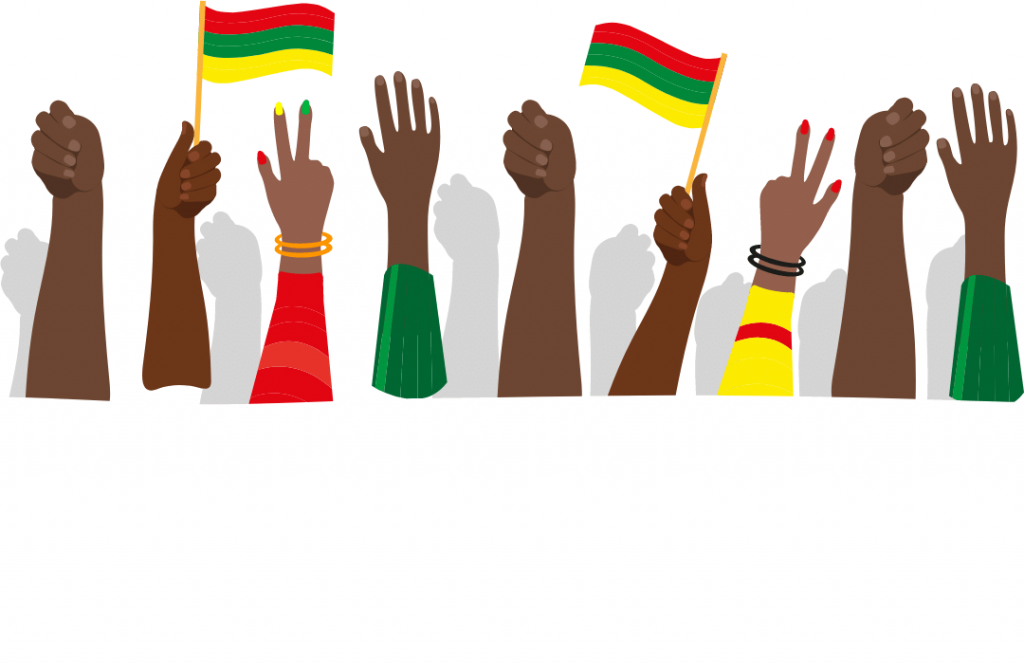
Black History Month
Continue reading

Do you ever wonder how you can train your mind?

Fatima Al-Fihri: The Woman Who Established The World’s First University

5 Tips on How to Make the Most of Online Learning
Privacy overview.
WhatsApp us
- Pakistan Today
- Politics News
- Saudi Arabia News
- Bahrain News
- Kuwait News
- Jordan News
- Palestine News
- Lebanon News
- PSL 2018 News
- PSL 2019 News
- PSL 2020 News
- PSL 2021 News
- PSL 2022 News
- PSL 2023 News
- PSL 2024 News
- Cricket News
- Football News
- Hockey News
- Miscellaneous News
- Hollywood News
- Bollywood News
- Lollywood News
- Fashion News
- Education News
- Kashmir News
- Weather News
- Agriculture News
- News Feature News
- Infotainment News
- Science News
- Lifestyle News
- Today News Pictures
- News Pictures Archive
- Death anniversary of Hazrat Khadija tul Kubra (RA) observed
Death Anniversary Of Hazrat Khadija Tul Kubra (RA) Observed
Umer Jamshaid Published April 23, 2021 | 04:20 PM

ISLAMABAD, (UrduPoint / Pakistan Point News - 23rd Apr, 2021 ) :Youm-e-Wisal (death anniversary) of Ummul Momineen Hazrat Khadija tul Kubra (ra) observed as Youm Al-Huzn (day of sorrow) throughout the country on Friday with religious spirit, devotion and reverence.
� The great Muslim lady Hazrat Khadijah (RA) passed away on 10th Ramazan in the tenth year of Hijrah, 620 CE, at the age of 65. Soon after her death, the uncle and guardian of Hazrat Muhammd (PBUH), Abu Talib (AS) also died .
The two lamps of their glorious lives were extinguished. The Holy prophet was overwhelmed with sorrow. He called the year of their death as, "The Year of Sorrow" (Aa'm ul Huzn).
"She believed in me when no one else did. She embraced islam when people disbelieved me. And she helped and comforted me when there was none else to lend me a helping hand." "Never was I jealous of any of the Prophet's wives", said Sayyidah Ayesha Radi ALLAH Ta'ala Anha, "but Khadija, although I never saw her. Her sweet memory never blurred in the Prophet's heart.
Once I hurt his feelings on this issue and he replied gravely, 'Allah SubHanuhu wa Ta'ala has blessed me with her love .' She has always been known as "Tahirah-Pure"...Islam could not have prospered without the role of Bibi Khadija (R.A).
She was a rich widow and ran a large trade. Holy Prophet Muhammad (SAW) was associated with her in trading ventures. She herself� offered the Holy prophet (SAW) to marry her.
Sayyiduna Rasoolullah's (SAW) marriage with Sayyidah Khadija �(RA) took place about fifteen years before the beginning of the �Revelation, he being 25, and she was 40.
From the time of her marriage with the Holy Prophet (SAW) till �her death, over a period of twenty years, she gave her husband ease of circumstances, and deep love and devotion.
Her contribution, determination, devotion, love , care and dedication for the cause of Islam in essence revolutionized the world .
She was the first woman to declare that the Creator was One, and that Muhammad (SAW) was His Messenger.
Khadija (ra) bore the Beloved Habeeb (SAW) six children.The first born was named Qaasim (ra) after whom, according to Arab custom, the Holy Prophet received the Kunya "Abul Qaasim" or "the father of Qaasim". Then were born Abdullah (ra).
All of them passed away in their infancy. Amongst the daughters Ruqayya (ra) was the eldest, then came Zaynab (ra), Umm Kulthoom (ra) and the last and best known of them was Faatima (ra).
When Islam came under mounting pressure from its enemies, Khadija (SA) sacrificed her comforts, her wealth and her home for it. Hazrat Khadija was born in Makkah . She was the daughter of �Khuwayled bin Asad bin Abdul Uzza bin Qusayy.
Her family was distinguished not only by its opulence but also by the content of its character. Khadija's mother had died in or around AD. 575; and Khuwayled, her father, died in or around A.D. 585.
Hazrat Khadija (r.a) home had become a shelter not only for Rasool (SAW) but for all Muslims . Hazrat Khadija tul Kubra (ra) had been the protector and defender of Paigham-e-Risalat in the initial and most difficult era of Islam. The Seerat-e-Khadija (RA) is the beacon of light for women at large in every era.
Related Topics
Recent stories.

SACM inspects rainwater drainage in Keamari, West districts

Privatization in Power Sector only way forward: Experts

Commissioner Karachi reviews arrangements for Eid Milad-ul-Nabi (SAW)

Increasing judges number to help provide speedy justice: Barrister Malik

DC declares Aug 29, 30 holidays for schools in Nawabshah due to heavy rain

Ongoing projects to strengthen tourism industry, boost economy: Advisor

CM visits coastal districts to review rain situation

Schools will remain open in Karachi on August 29

Khawaja Salman visits Rana Tanveer's residence to condole his brother's death

Health secretary orders comprehensive review of teaching hospitals

Power minister forms committee to convert imported coal IPPs on Thar coal

PCB confirms schedule of Champions One-Day Cup
More Stories From Pakistan
MoHR holds panel discussion on 'Fostering tolerance and Inclusivity'
Development of mega Gwadar project to end economic stagnation in areas: Governor
DC Jhal Magsi visits Govt Boys Higher Secondary School Gandawa
Qasim Naveed Qamar appoints as focal person for rain emergency in Tando Muhammad Khan
Pre-arrest bail application of CM KP accepted
KPK governor advocates use of local resources for energy generation
2 criminals arrested in injured condition
Govt to begin privatization of DISCOs by April 2025: Minister

NCERT Books
NCERT Class 6 Urdu Apni Zuban, Guldasta, Jaan Pahechan Book PDF Download [Updated 2023-24]
Ncert books for class 6 urdu pdf download [updated for 2021-22 academic year].
Download NCERT Books for Class 6 Urdu as per the Latest CBSE Syllabus 2021-22. Study from NCERT Class 6 Urdu Notes & score well in exams.
Class 6 Urdu Apni Zuban NCERT Book PDF Download
- NCERT Class 6 Urdu Apni Zuban Textbook PDF Download
- NCERT Class 6 Urdu Apni Zuban Chapter 1
- NCERT Class 6 Urdu Apni Zuban Chapter 2
- NCERT Class 6 Urdu Apni Zuban Chapter 3
- NCERT Class 6 Urdu Apni Zuban Chapter 4
- NCERT Class 6 Urdu Apni Zuban Chapter 5
- NCERT Class 6 Urdu Apni Zuban Chapter 6
- NCERT Class 6 Urdu Apni Zuban Chapter 7
- NCERT Class 6 Urdu Apni Zuban Chapter 8
- NCERT Class 6 Urdu Apni Zuban Chapter 9
- NCERT Class 6 Urdu Apni Zuban Chapter 10
- NCERT Class 6 Urdu Apni Zuban Chapter 11
- NCERT Class 6 Urdu Apni Zuban Chapter 12
- NCERT Class 6 Urdu Apni Zuban Chapter 13
- NCERT Class 6 Urdu Apni Zuban Chapter 14
- NCERT Class 6 Urdu Apni Zuban Chapter 15
- NCERT Class 6 Urdu Apni Zuban Chapter 16
- NCERT Class 6 Urdu Apni Zuban Chapter 17
- NCERT Class 6 Urdu Apni Zuban Chapter 18
- NCERT Class 6 Urdu Apni Zuban Chapter 19
- NCERT Class 6 Urdu Apni Zuban Chapter 20
Class 6 Urdu Guldasta NCERT Book PDF Download
- NCERT Class 6 Urdu Guldasta Textbook PDF Download
- NCERT Class 6 Urdu Guldasta Chapter 1
- NCERT Class 6 Urdu Guldasta Chapter 2
- NCERT Class 6 Urdu Guldasta Chapter 3
- NCERT Class 6 Urdu Guldasta Chapter 4
- NCERT Class 6 Urdu Guldasta Chapter 5
- NCERT Class 6 Urdu Guldasta Chapter 6
- NCERT Class 6 Urdu Guldasta Chapter 7
- NCERT Class 6 Urdu Guldasta Chapter 8
- NCERT Class 6 Urdu Guldasta Chapter 9
- NCERT Class 6 Urdu Guldasta Chapter 10
- NCERT Class 6 Urdu Guldasta Chapter 11
Class 6 Urdu Jaan Pahechan NCERT Book PDF Download
- NCERT Class 6 Urdu Jaan Pahechan Textbook PDF Download
- NCERT Class 6 Urdu Jaan Pahechan Chapter 1
- NCERT Class 6 Urdu Jaan Pahechan Chapter 2
- NCERT Class 6 Urdu Jaan Pahechan Chapter 3
- NCERT Class 6 Urdu Jaan Pahechan Chapter 4
- NCERT Class 6 Urdu Jaan Pahechan Chapter 5
- NCERT Class 6 Urdu Jaan Pahechan Chapter 6
- NCERT Class 6 Urdu Jaan Pahechan Chapter 7
- NCERT Class 6 Urdu Jaan Pahechan Chapter 8
- NCERT Class 6 Urdu Jaan Pahechan Chapter 9
- NCERT Class 6 Urdu Jaan Pahechan Chapter 10
- NCERT Class 6 Urdu Jaan Pahechan Chapter 11
- NCERT Class 6 Urdu Jaan Pahechan Chapter 12
- NCERT Class 6 Urdu Jaan Pahechan Chapter 13
- NCERT Class 6 Urdu Jaan Pahechan Chapter 14
- NCERT Class 6 Urdu Jaan Pahechan Chapter 15
- NCERT Class 6 Urdu Jaan Pahechan Chapter 16
- NCERT Class 6 Urdu Jaan Pahechan Chapter 17
- NCERT Class 6 Urdu Jaan Pahechan Chapter 18
- NCERT Class 6 Urdu Jaan Pahechan Chapter 19
- NCERT Class 6 Urdu Jaan Pahechan Chapter 20
- NCERT Class 6 Urdu Jaan Pahechan Chapter 21
- NCERT Class 6 Urdu Jaan Pahechan Chapter 22
- NCERT Class 6 Urdu Jaan Pahechan Chapter 23
- NCERT Class 6 Urdu Jaan Pahechan Chapter 24
- NCERT Class 6 Urdu Jaan Pahechan Chapter 25
- NCERT Class 6 Urdu Jaan Pahechan Chapter 26
- NCERT Class 6 Urdu Jaan Pahechan Chapter 27
- NCERT Class 6 Urdu Jaan Pahechan Chapter 28
- NCERT Class 6 Urdu Jaan Pahechan Chapter 29
- NCERT Class 6 Urdu Jaan Pahechan Chapter 30
- NCERT Class 6 Urdu Jaan Pahechan Chapter 31
- NCERT Class 6 Urdu Jaan Pahechan Chapter 32
Leave a Comment Cancel reply
You must be logged in to post a comment.

NCERT Solutions For Class 6 Urdu | Chapterwise Notes
یہ کورس چھٹی جماعت کے NCERT سلیبس پڑھنے والے طلبا و طالبات کے لیے ہے۔ اس کورس میں ہم چھٹی جماعت کی کل تین کتابوں کے نہایت ہی آسان نوٹس پیش کر رہے ہیں۔ یہ تین کتابیں الگ الگ ریاستوں میں پڑھنے والے طلبا و طالبات کے سلیبس کے مطابق ہوں گی۔ طلباء نیچے دیے گئے کورس سے اپنے سلیبس کی اردو کتاب کے مطلوبہ یونٹس پر کلک کر کے سوالوں کے جوابات پڑھ سکتے ہیں۔ NCERT چھٹی جماعت میں کل تین کتابیں ہیں جن کے نام یہ ہیں: ﴿۱﴾ اپنی زبان ﴿۲﴾ جان پہچان ﴿۳﴾ اردو گلدستہ۔ ہم نیچے ان سبھی کتابوں کے نوٹس پیش کر رہے ہیں۔ آپ اپنی قیمتی آراء سے ہمیں ہماری ای میل [email protected] پر آگاہ کر سکتے ہیں۔
اُردو گلدستہ

IMAGES
COMMENTS
اس سبق میں حضرت خدیجہ کی سیرت کے اہم پہلوؤں کو بیان کیا گیا ہے۔ملک عرب کے مشہور شہر مکہ اور مدینہ تھے۔ان کا تعلق مکہ سے تھا۔شہر مکہ کی اس مالدار اور نیک بیوی کا نام حضرت خدیجہ تھا۔. وہ بیوہ ...
حضرت ابنِ اسحاق رضی اللّٰہ تعالیٰ عنہ سے روایت ہے کہ حضرت خدیجہ رضی اللّٰہ تعالیٰ عنہا کا شمار مکّہ مکرمہ کی معزز ترین اور مال دار خواتین میں ہوتا تھا۔. حضرت خدیجہ رضی اللّٰہ تعالیٰ عنہا اپنا ...
Urdu Item Size 98.4M . Hazrat Khadija tul Kubra ام المومنین حضرت خدیجہ الکبری Nadeem (Author) نیر ندیم (Author) General عام ... Hazrat-Khadija-tul-Kubra-114598 Identifier-ark ark:/13960/t59d73f0t Ocr tesseract 4.1.1 Ocr_detected_lang ur Ocr_detected_lang_conf ...
Hazrat Khadija bint Khuwaylid (may Allah be pleased with her) holds a significant position in Islamic history as the first wife of Prophet Muhammad (peace be upon him). Her life and contributions are highly esteemed and serve as an inspiration for Muslim women and men alike. Here are some details about Hazrat Khadija: Early Life and Background: Hazrat Khadija was born in Makkah around 555 CE.
'انھوں نے اپنے راستے کی ہر رکاوٹ کو گرا دیا۔ یہاں تک کہ آج کی خواتین بھی وہ کرنے کی خواہش مند ہوں گی جو انھوں ...
6 Kalma Hajj Ayat ul Kursi Tarawih laylat ul Qadr Itikaf Muharram Sadaqah Zakat Fitrana Dua e Qunoot Tahajjud. Hazrat Khadijah Tul Kubra RA in Urdu (Article No. 1169). Read Islamic articles about حضرت سیدّہ خدیجة الکبریٰ رضی اللہ عنہا and other important Islamic articles about Quran, Hadees, Namaz, Ramadan and more.
Birth : Makkah. Death : 10th Ramazan 3 years before Hijrah at the age of 64 years. Buried : in Makkah. Birth and Geneology. Hazrat Khadija (SA) was the first wife of the Holy Prophet (pbuh&hf). She was born in Makka. Her father's name was Khuwaylid bin Asad and he was a wealthy trader. The Geneology of both Prophet Mohammad (pbuh&hf) and Hazrat ...
Learning Made Easy Presents essay on Hazart khadiya r.a / Khadija R.A essay in urdu/ ؓحضرت خدیجہؓ پر اردو مضمون / حضرت خدیجہ کا تعارف / حضرت خدیجہؓ ...
"Hazrat Khadija tul Kubra (RA)", Urdu Class 6, Unit 3
Hazrat Khadija'tul-Kubra (Radhi Allah Anha) [Urdu] - Free download as PDF File (.pdf), Text File (.txt) or view presentation slides online. This book written by Hudhrat Dr.Mushahid Razvi (Sallamhu) upon Sayya'datuna Ummul Momineen Hudhrat Khadija'tul-Kubra (Radhi Allah Anha), blessed life . [Credits: Dr.Mushahid Razvi at SCRIBD] Jazak Allah
Hazrat Khadijah Tul Kubra RTA - Article No. 349 حضرت خدیجۃ الکبریٰ رضی اللہ تعالیٰ عنہا - تحریر نمبر 349 حضرت خدیجہ ، مکہ کی ایک معزز، مالدار، عالی نسب خاتون جن کا تعلق عرب کے قبیلے قریش سے تھا۔
Seerat Hazrat Khadija Tul Kubra / سیرت حضرت خدیجتہ الکبری ... Internet Archive HTML5 Uploader 1.6.4 . plus-circle Add Review. comment. Reviews There are no reviews yet. Be the first one to write a review. 2,929 Views . DOWNLOAD OPTIONS download 1 file ...
According to a number of sources, Khadijah was born in 565 A.D. and died in 620, at the age of 55, but some historians say that she dies ten years later. Khadijah's mother, who died around 575 A.D., was Fatima daughter of Za'ida ibn al-Asam of Banu `Amir ibn Lu'ayy ibn Ghalib, also a distant relative of Prophet Muhammad (ص). Khadijah's ...
seerat un nabi in urdu essay with headings - سیرت النبی پر ایک مضمون. Hazrat Muhammad (sallallahu alaihi wasallam ) is the central figure of Islam and is considered its most perfect human being. He was born in Makkah in 570 CE and belonged to the Quraish tribe. At an early age, he displayed qualities that distinguished him ...
Khadijah is revered by Muslims worldwide, honored with the titles First Believer and Mother of Believers. Muslims believe Islam is the true faith, originating with Adam and Eve, so the work of Muhammad did not create Islam. However, its success is in great part due to Khadijah's unwavering support in its formative years.
Hazrat Khadija's ra servant, Maysarah, who accompanied the Holy Prophet sa on his journey was full of praise for him. Impressed, she extended the marriage proposal to the Holy Prophet sa, which was accepted and through mutual consent, they got married. The Holy Prophet sa was 25 and Hazrat Khadija ra, 40. Despite the disparity between their ...
Khadija bint-e-khuwaylid (R.A) -Mother of believers - Seerat e Ummahat-Ul-Momineen - IslamStudioIslam Studio is a search engine that seeks to provide Authent...
He said of Khadeejah RA: "She believed in me when people disbelieved, she supported me with her wealth when people denied me their material aid and Allah blessed me with children from her". Societal structures today present their own challenges for women, but it is wholly possible for the 21st century Muslim women to reap the best of both ...
Khadija's mother had died in or around AD. 575; and Khuwayled, her father, died in or around A.D. 585. Hazrat Khadija (r.a) home had become a shelter not only for Rasool (SAW) but for all Muslims. Hazrat Khadija tul Kubra (ra) had been the protector and defender of Paigham-e-Risalat in the initial and most difficult era of Islam.
Download NCERT Books for Class 6 Urdu as per the Latest CBSE Syllabus 2021-22. Study from NCERT Class 6 Urdu Notes & score well in exams. Study from NCERT Class 6 Urdu Notes & score well in exams. Class 6 Urdu Apni Zuban NCERT Book PDF Download
Hazrat Khadija R A is the first wife oF prophet Muhammad S. A. W , Khadija bint e khywaylid R. A ( Mother of beleivers )Seerat r Ummahat Ul Mominen -Mehak S...
0. NCERT Solutions For Class 6 Urdu | Chapterwise Notes -In this course we are providing free notes of class 7th Urdu Books of NCERT Latest Syllabus namely Apni Zaban, Jaan Pehchaan and Urdu Guldasta in very easy wordings, NCERT Solutions For Class 6 Urdu | Chapterwise Notes , apni zaban urdu book class 6 answers, کتاب" اپنی زبان ...
FULL EXERCISE WITH ALL QUES & ANS URDU CLASS 6 | CH-6 : https://youtu.be/s3npPfIiOIgStory Telling - https://www.youtube.com/playlist?list=PL77TaDTfl5Ss2WeM04...